In the 1890s, Fifth Avenue in New York City was a bustling street lined with grand and elegant buildings. The avenue was a symbol of wealth and prosperity, home to the city’s elite and their luxurious townhouses.
One of the most famous residents on Fifth Avenue was the Vanderbilt family, whose mansion at Fifth Avenue and 57th Street was the largest private residence in the city at the time. The mansion was a sight to behold, with its ornate architecture and opulent decor.
On Fifth Avenue, you could also find some of the city’s most exclusive shops and department stores, such as Lord & Taylor and Bergdorf Goodman. The avenue was also home to the famous Waldorf Astoria hotel, where the wealthy and famous would stay while visiting the city.
The streets were always crowded with horse-drawn carriages and the latest automobiles, as well as fashionable ladies and gentlemen dressed in the latest fashions. Street vendors and performers were also a common sight on the avenue.
As you walked down Fifth Avenue in the 1890s, you would have been surrounded by the grand and ornate architecture of the buildings lining the street. The avenue was a showcase of the wealth and power of the city’s elite, and the buildings reflected this. Many of the townhouses and apartment buildings were designed in the Beaux-Arts style, with elegant facades and grand entrances.
Along the avenue, you would have found some of the most exclusive shops and department stores in the city. Lord & Taylor, for example, was known for its high-end clothing and luxury goods. Bergdorf Goodman, another famous store on the avenue, was a destination for the wealthy to find the latest fashion and accessories.
The Waldorf Astoria hotel, located at the corner of Fifth Avenue and 34th Street, was another destination for the wealthy and famous. The hotel was one of the most luxurious in the city, known for its elegant decor and first-class service. Many of the city’s elite would stay there while visiting the city.
As you walked down the avenue, you would have seen horse-drawn carriages and the latest automobiles passing by, as well as street vendors and performers entertaining the crowds. The avenue was always bustling with activity, and it was a place to see and be seen.
In the 1890s, Fifth Avenue was a symbol of wealth and prosperity, and it was a place where the elite of New York City came to display their wealth and status. The memories of that time are filled with images of grandeur, opulence, and elegance. It was a time when the city was at its peak and the avenue was at the center of it all.
#1 View of Astor Residence. 5th Avenue and East 65th Street, 1899
#2 Exterior view of the Metropolitan Club (at 5th Avenue & 60th Street), 1890s
#3 Several people stroll up a path at the Green-Wood Cemetery, located at Fifth Avenue and Twenty-Fifth Street in Brooklyn, 1893
#4 The ruins of the Hotel Windsor on the corner of 5th Avenue and East 47th Street, 1890s. The hotel caught fire on St Patrick’s Day, and around 90 people were killed in the blaze.
#5 The remains of the Windsor Hotel on Fifth Avenue, Manhattan, after it was destroyed by fire on St Patrick’s Day, 17th March 1899. Around 90 people lost their lives.
#6 New York City scene in front of Holland House, 30th Street and Fifth Avenue, 1899.
#7 The Dewey Parade, 1899 on Fifth Avenue north from 44th Street.
#8 The Elbridge T. Gerry residence, located on Fifth Avenue and East 61st Street, 1893
#9 Men and women walk with their backs to the camera, wearing formal top hats and dresses, in the Easter Parade, on Fifth Avenue, 1893
#10 Horsedrawn transport parked on the road before the canopy-covered entrance of Delmonico’s restaurant, on the corner of Fifth Avenue and 44th Street, 1898
#11 Funeral procession with flag-draped casket being pulled by horses on a cannon carrier for Isaac E. Hoagland, of Old Guard N.Y. on 5th Avenue, 1898
#12 Men and women walk on Fifth Avenue in front of the Plaza Hotel between 57th and 59th Streets, as a horsedrawn carriage sits by the curb, 1898
#13 An Easter parade passes down 5th Avenue, New York City, 1898.
#14 View of crowds at 23rd Street and Fifth Avenue, with the old Metropolitan Life Insurance building and the Madison Square Presbyterian Church in the background, 1898
#15 View of members of Squadron A riding on horseback during the parade for US naval hero George Dewey, in front of the Croton Distributing Reservoir at Fifth Avenue and 42nd Street, 1898
#16 Men and women walk on Fifth Avenue in front of the Plaza Hotel between 57th and 59th Streets, as a horsedrawn carriage sits by the curb, 1898
#17 View of Delmonico’s restaurant, located in the Delmonico building, on the northeast corner of Fifth Avenue and 44th Street in New York City, 1898
#18 Fifth Avenue and Madison Square, 1897. The Fifth Avenue Hotel, built 1856-59 by Amos Richards Eno at the intersection of Fifth Avenue and Broadway in Manhattan.
#19 St Patricks Cathedral, 1897
#20 Bicycling on Fifth Avenue. North From 124th Street, 1897.
#21 Waldorf-Astoria Hotel.
#22 Union League.
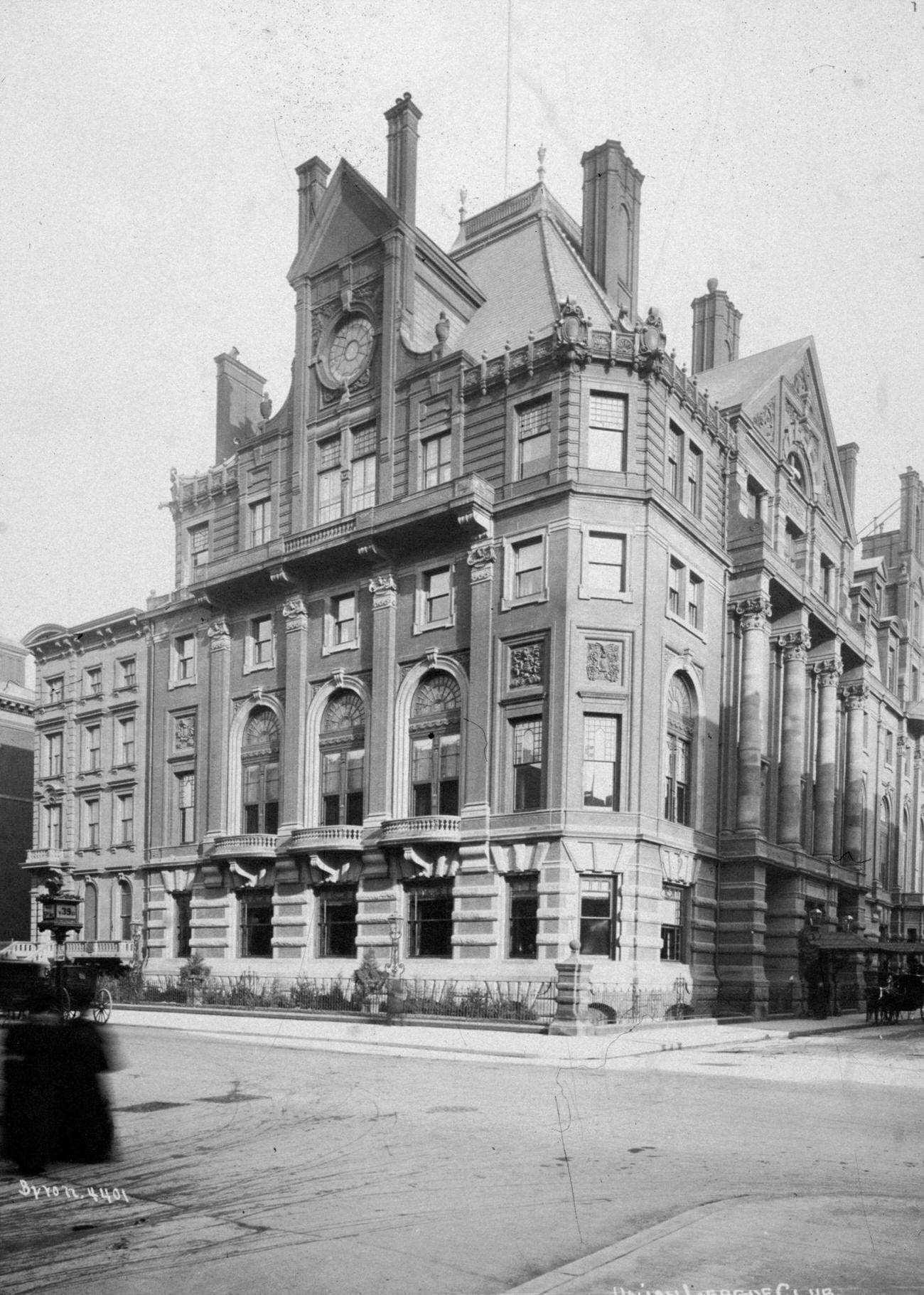
circa 1897: Exterior view of the building housing the Union League, located at Fifth Avenue and 39th Streets, New York City. A horsedrawn carriage travels past one side of the building. The League was a private club founded by Republicans during the American Civil War. The clubhouse is now gone.
#23 Party Preparations.
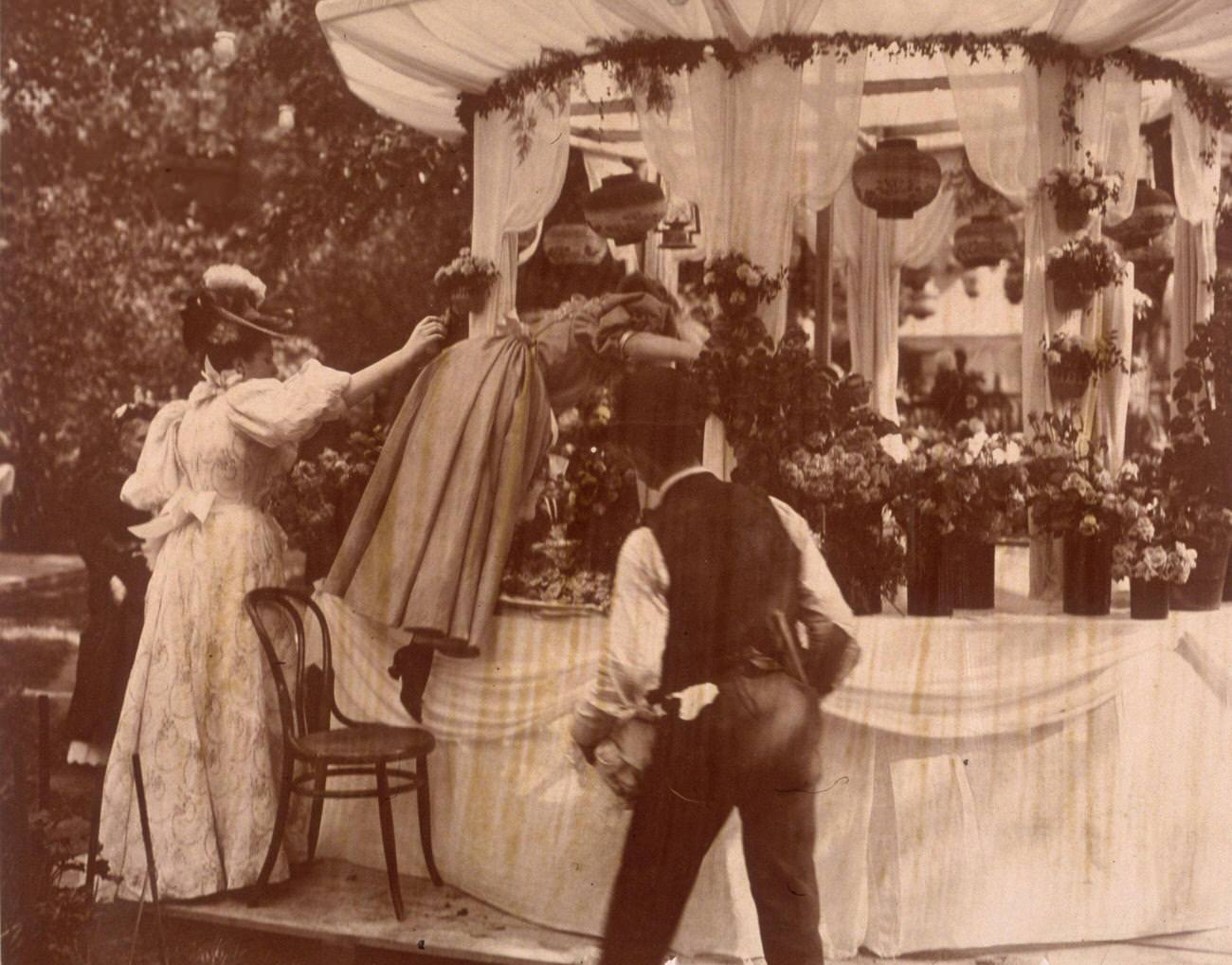
1896: Full-length view of two young women, one of them standing on a chair, decorating a gazebo with flowers while a man looks on, during preparations for a garden party to benefit Barnard College, held in an enclosure on East 37th Street, just off Fifth Avenue, New York City. The fledgling college undertook a fundraising drive in order to create its own residence on Morningside Drive.
#24 Fifth Avenue North from 34th Street.
#25 The Peacock Coach In Front Of Holland House.
#26 The Vanderbilt Coach In Front Of Holland House.
#27 Street Scene On 5th Avenue And West 50th Street In New York City
#28 Fifth Avenue In New York City.
#29 Fifth Avenue.
#30 Fifth Avenue
#31 Battery Place
#32 Down-Town.
#33 East Harlem Shantytown, 1894.
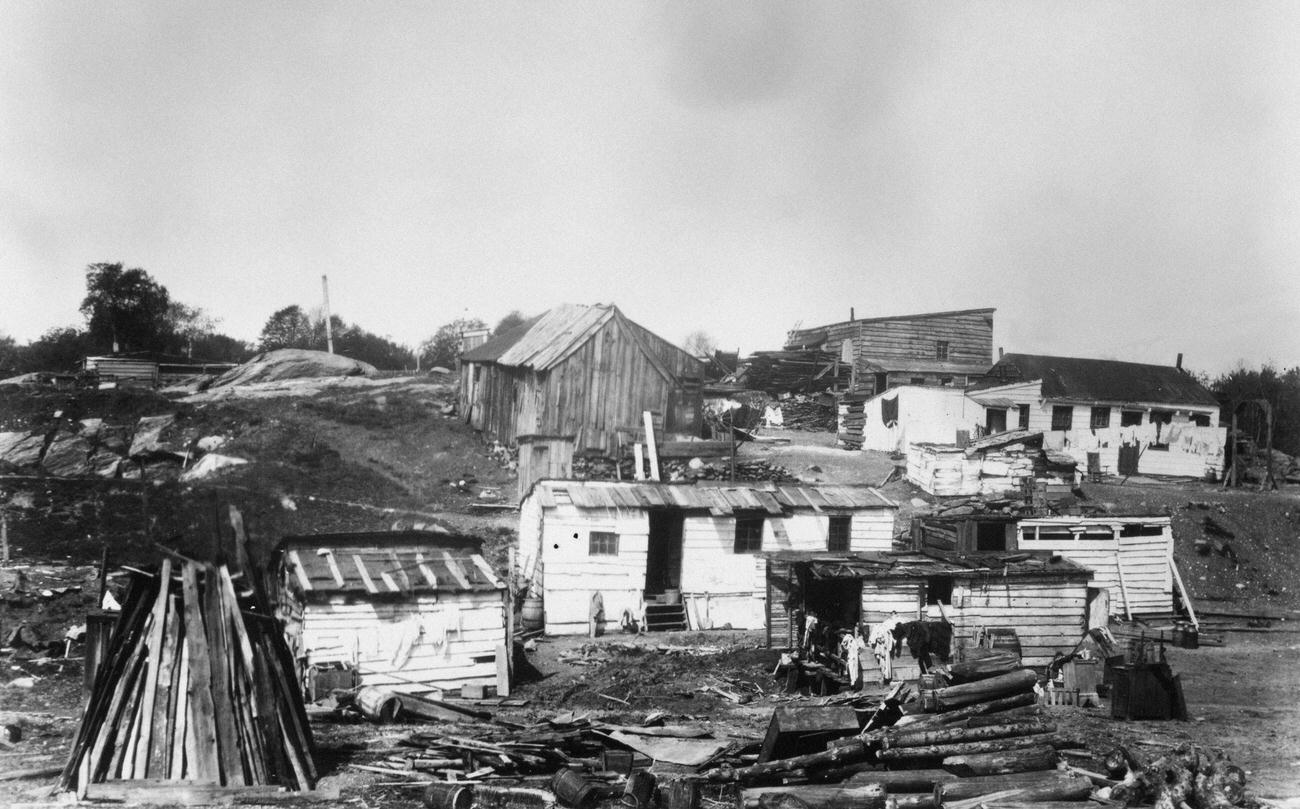
A shantytown of wood-built shacks at 102nd Street and Fifth Avenue in East Harlem, Upper Manhattan, New York City, New York, 1894. The properties in the area, built largely by German and Irish immigrants unable to find affordable housing, have been built from simple materials on undeveloped land.
#34 Exterior View of Cornelius Vanderbilt II Residence
#35 Twin Mansions Along Fifth Avenue.
#36 Fifth Avenue Hotel in New York City.
#37 Military Parade.
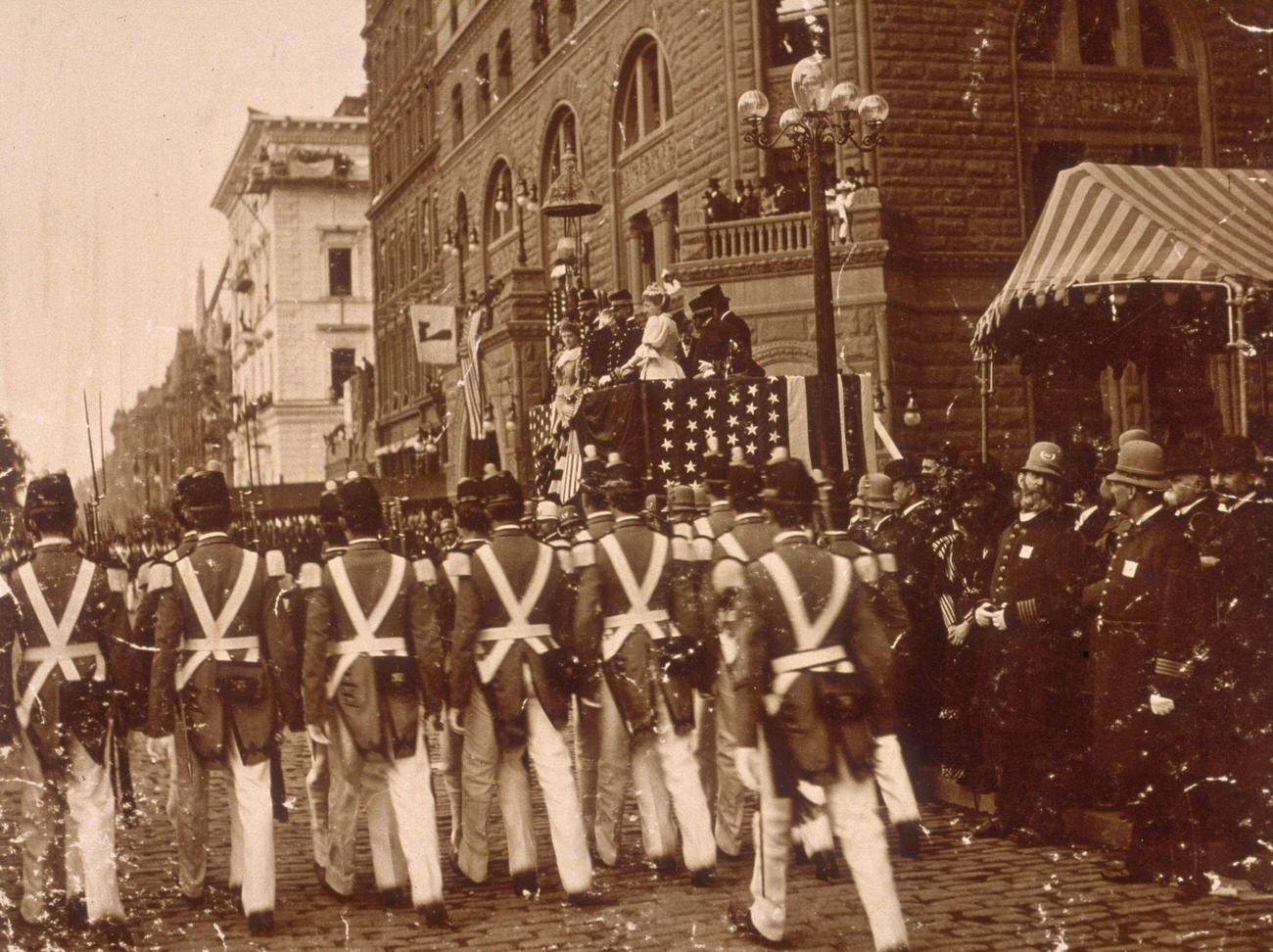
3rd June 1893: U.S. soldiers in the 7th regiment pass in review in honor of the visiting Spanish Royal Princess, Infanta Eulalia, who watches with the Spanish Royals and military officers from a balcony near the intersection of Fifth Avenue and Fifty-ninth Street, in Manhattan, New York City, New York policemen stand along the front of the crowds.
#38 Astor residence At 840 Fifth Avenue.
#39 Metropolitan Club, NYC.
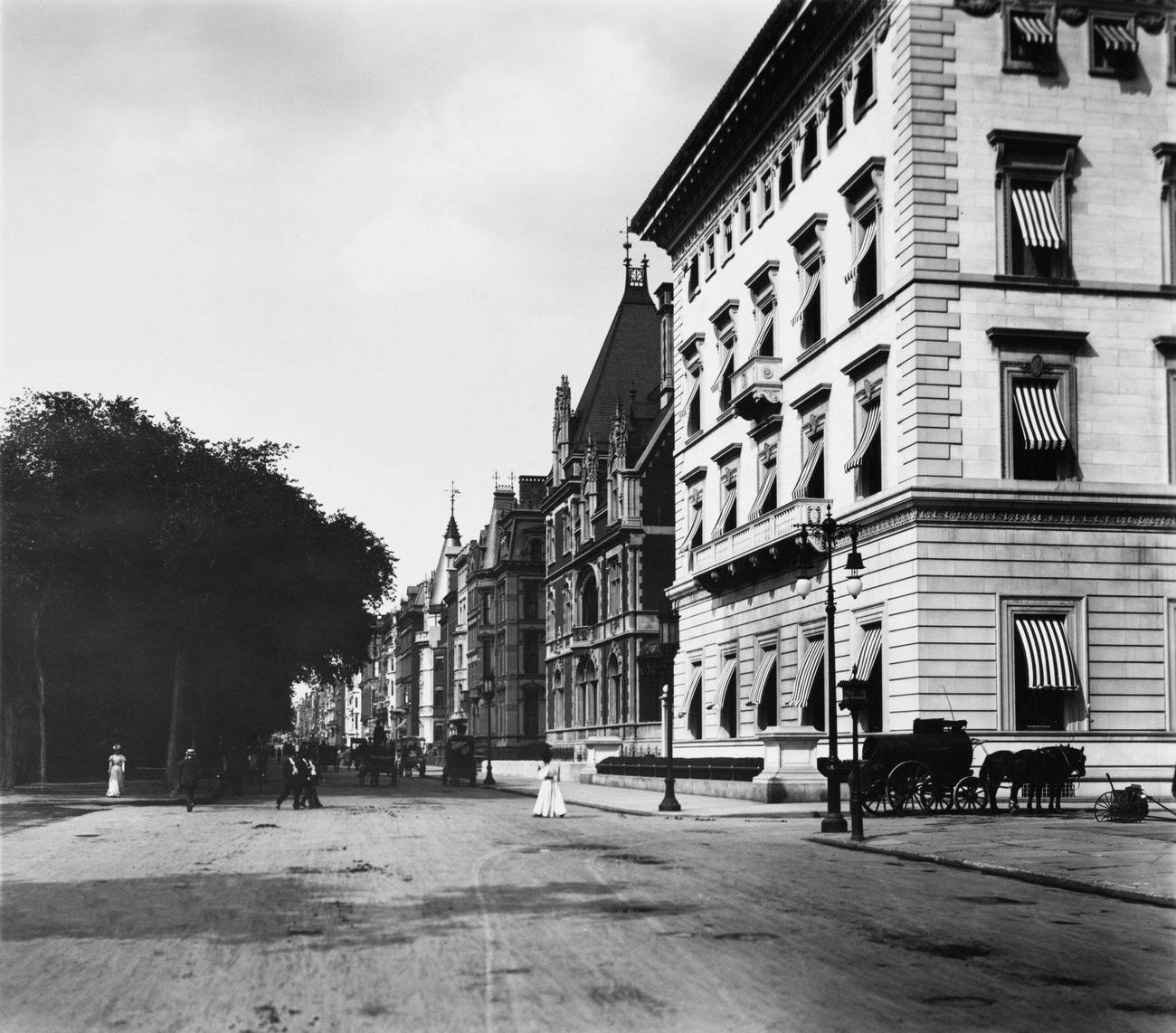
Pedestrians and horse-drawn carriages on Fifth Avenue, outside the clubhouse of the Metropolitan Club, a private members club at Fifth Avenue and East 60th Street in the borough of Manhattan, New York City, New York, circa 1895. Labelled the 'Millionaires’ Club' by the press, the building - completed in 1893 - was designed by architects McKim, Mead & White
#40 Hotel Savoy.
#41 Chinese Statesman.
#42 East Harlem Property, 1895.

A wood-built property on the north-east corner of 118th Street and Fifth Avenue in East Harlem, Upper Manhattan, New York City, New York, circa 1895. The properties in the area, built largely by German and Irish immigrants unable to find affordable housing, have been built from simple materials on undeveloped land.



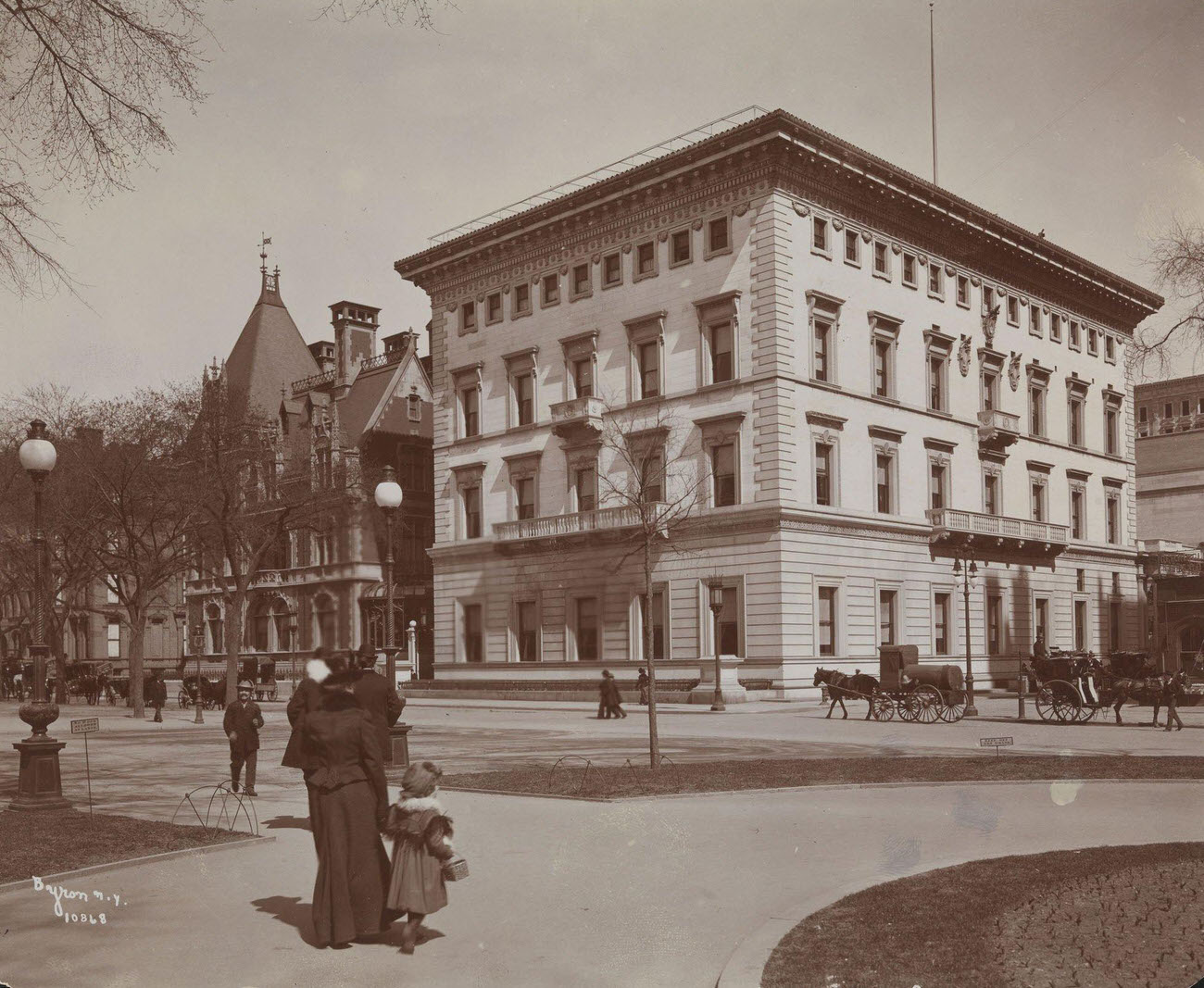
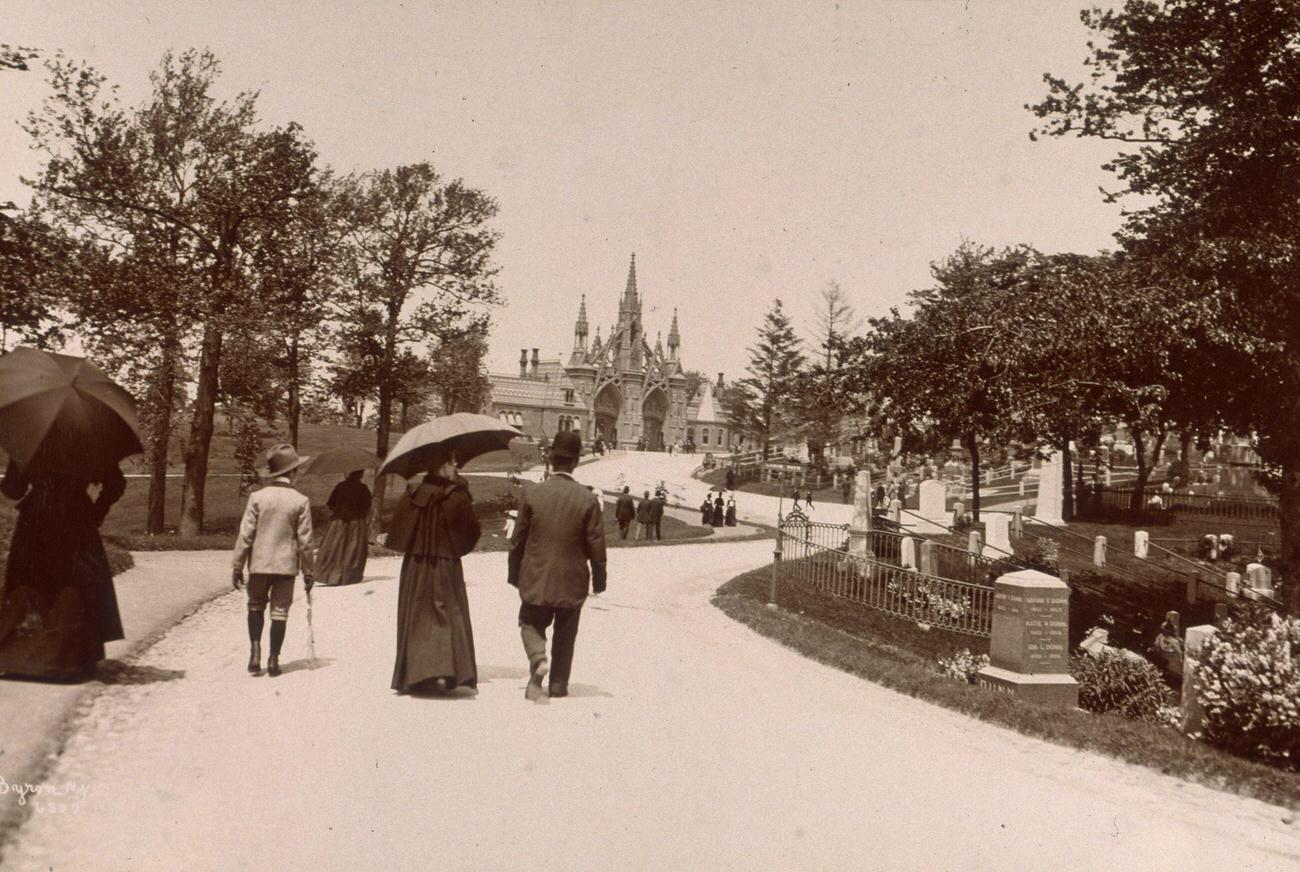
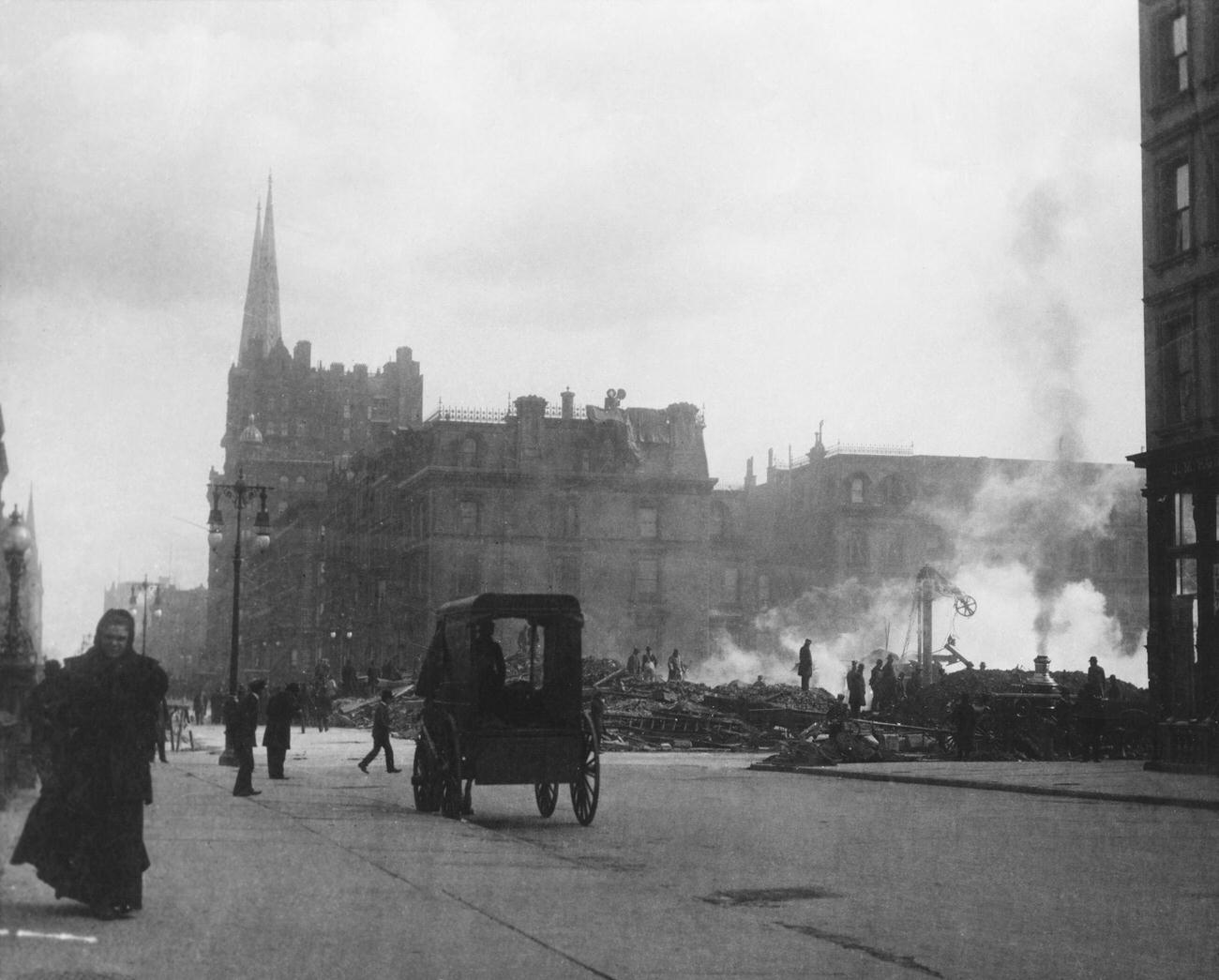
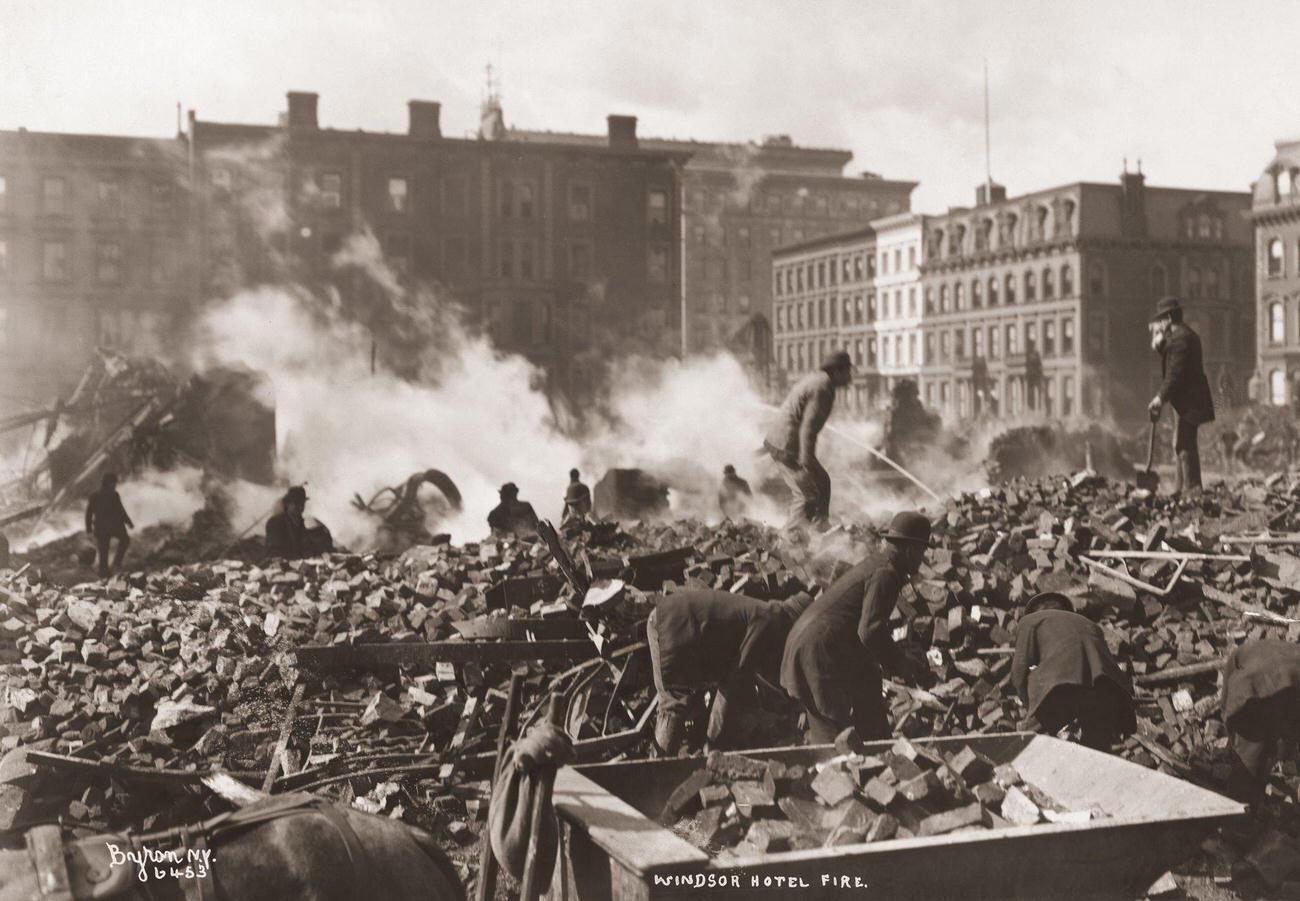
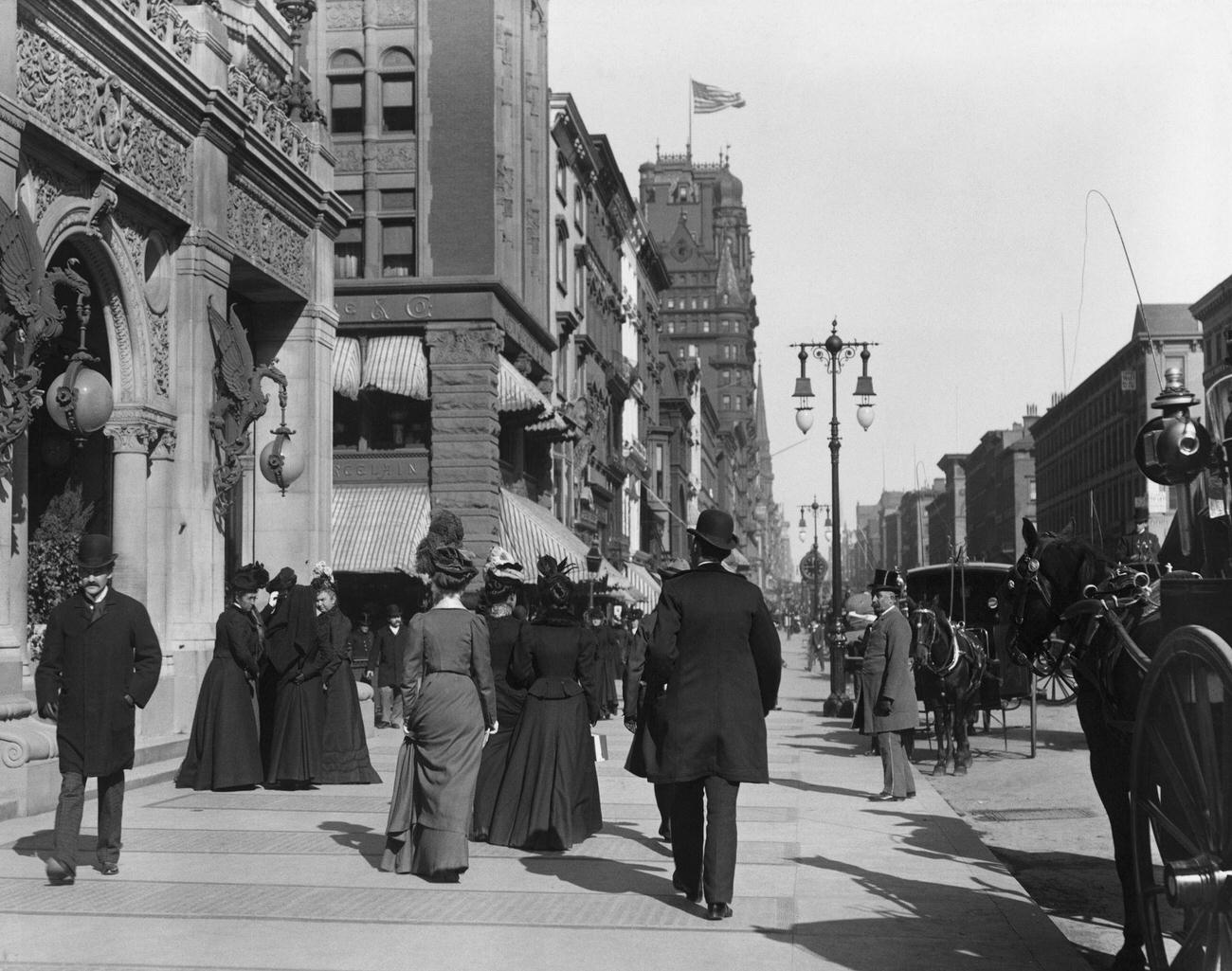
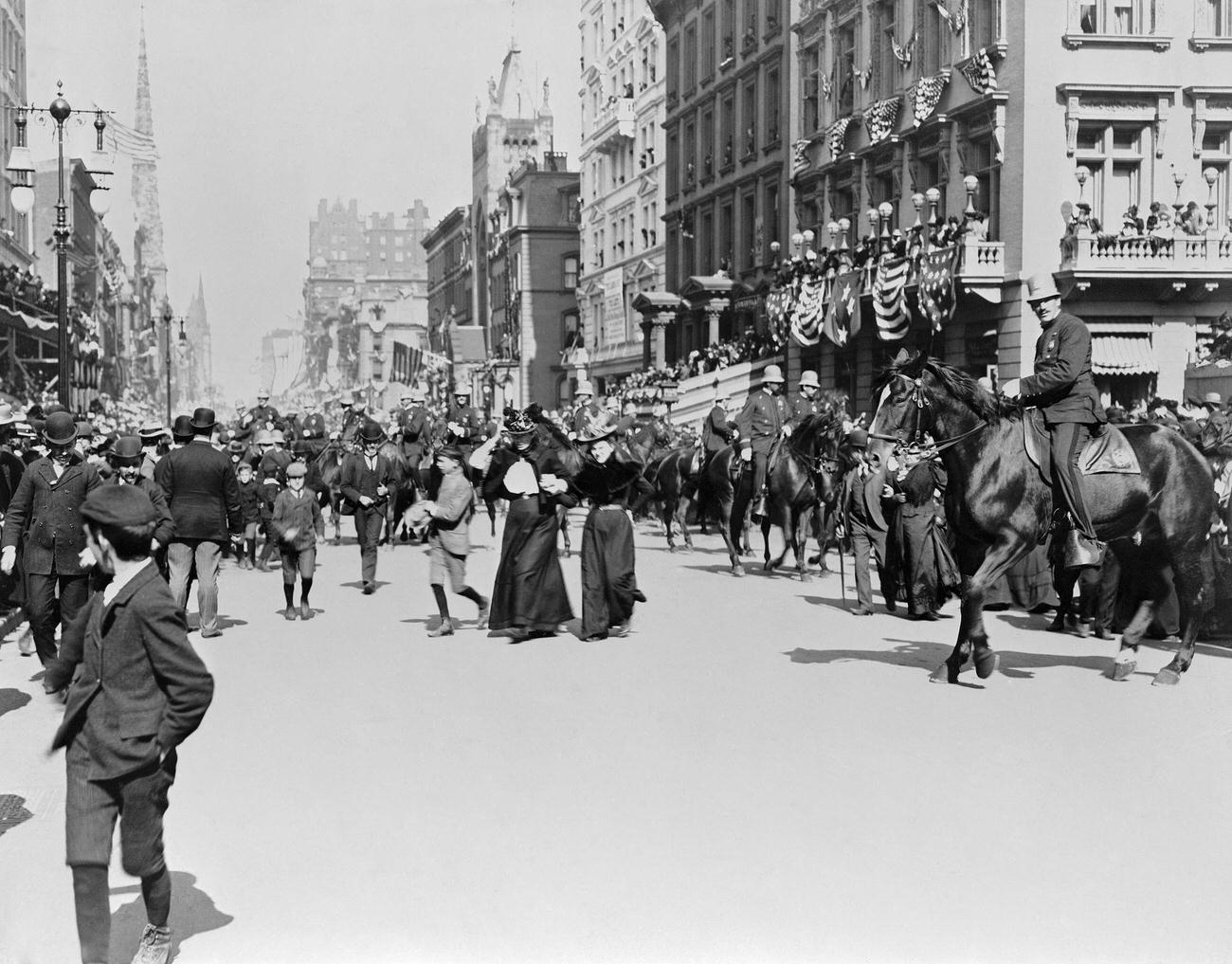
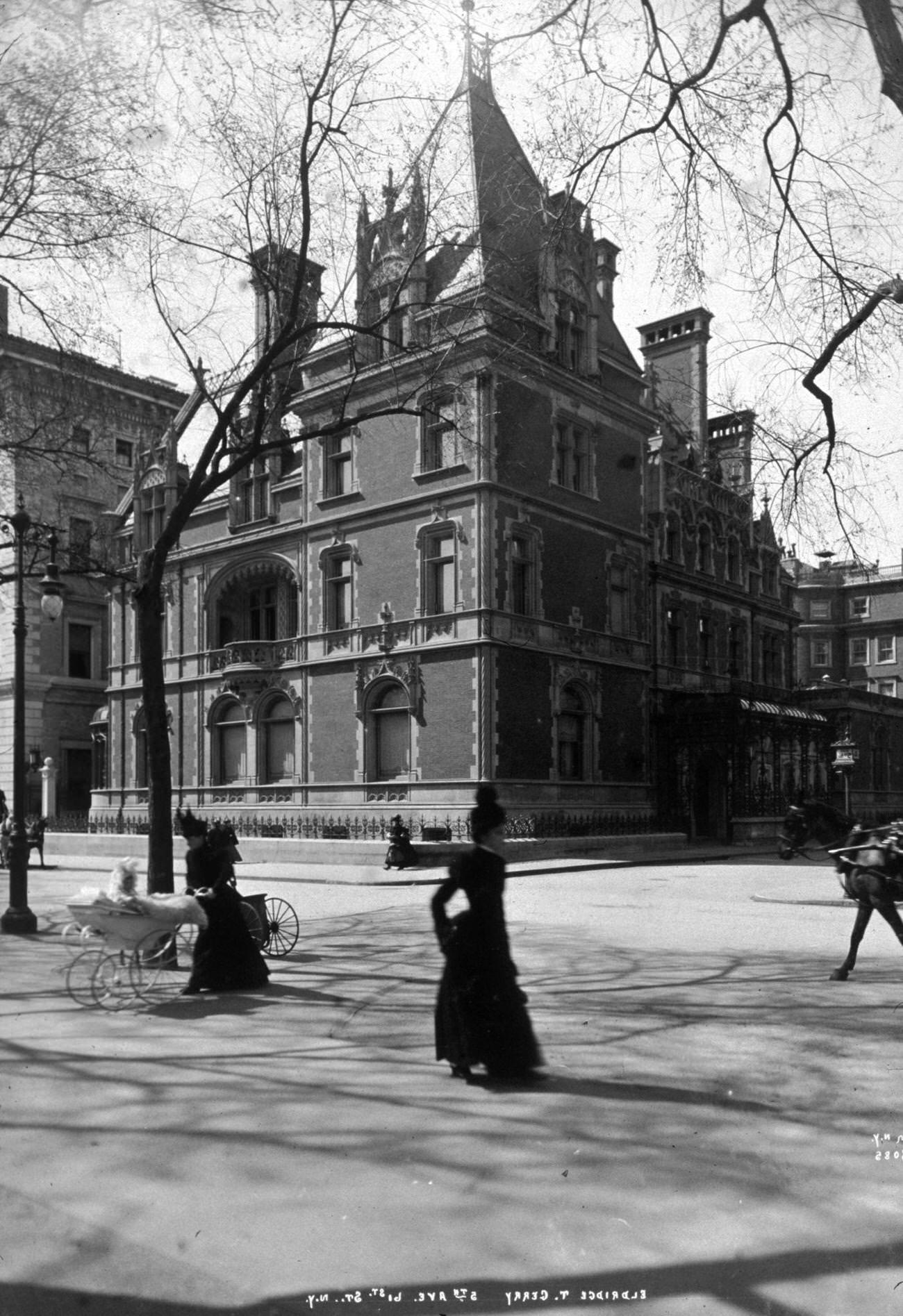
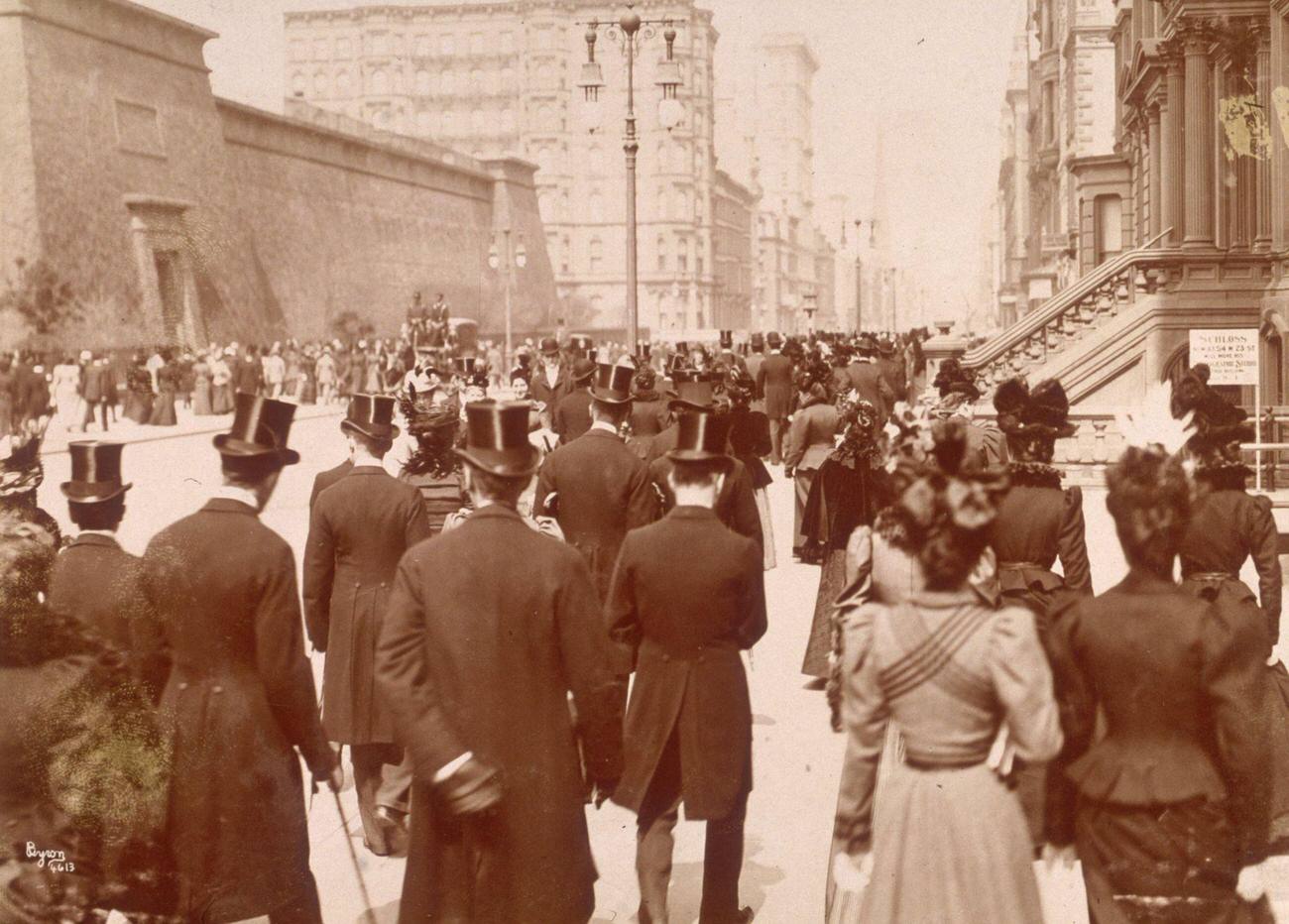
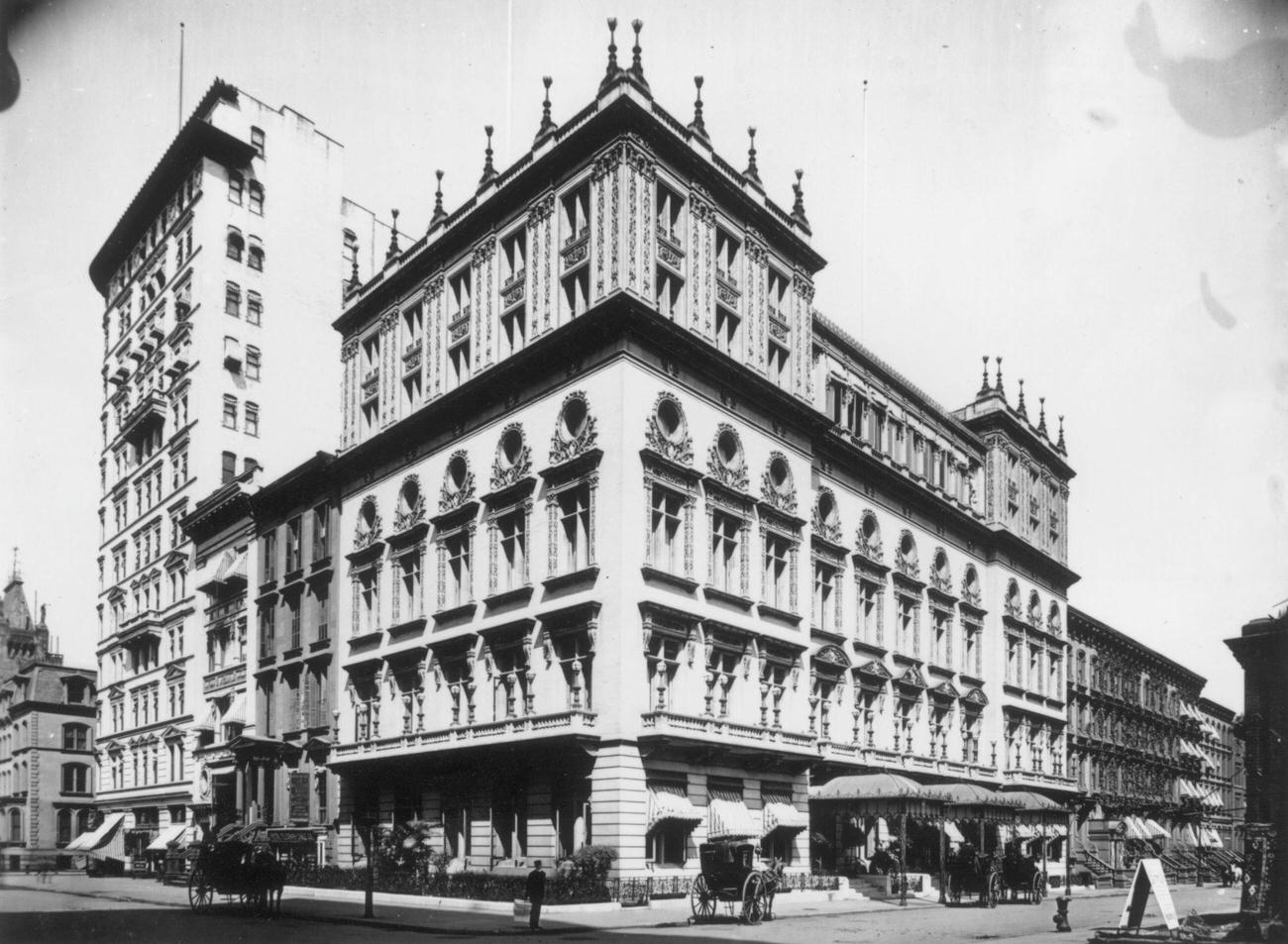
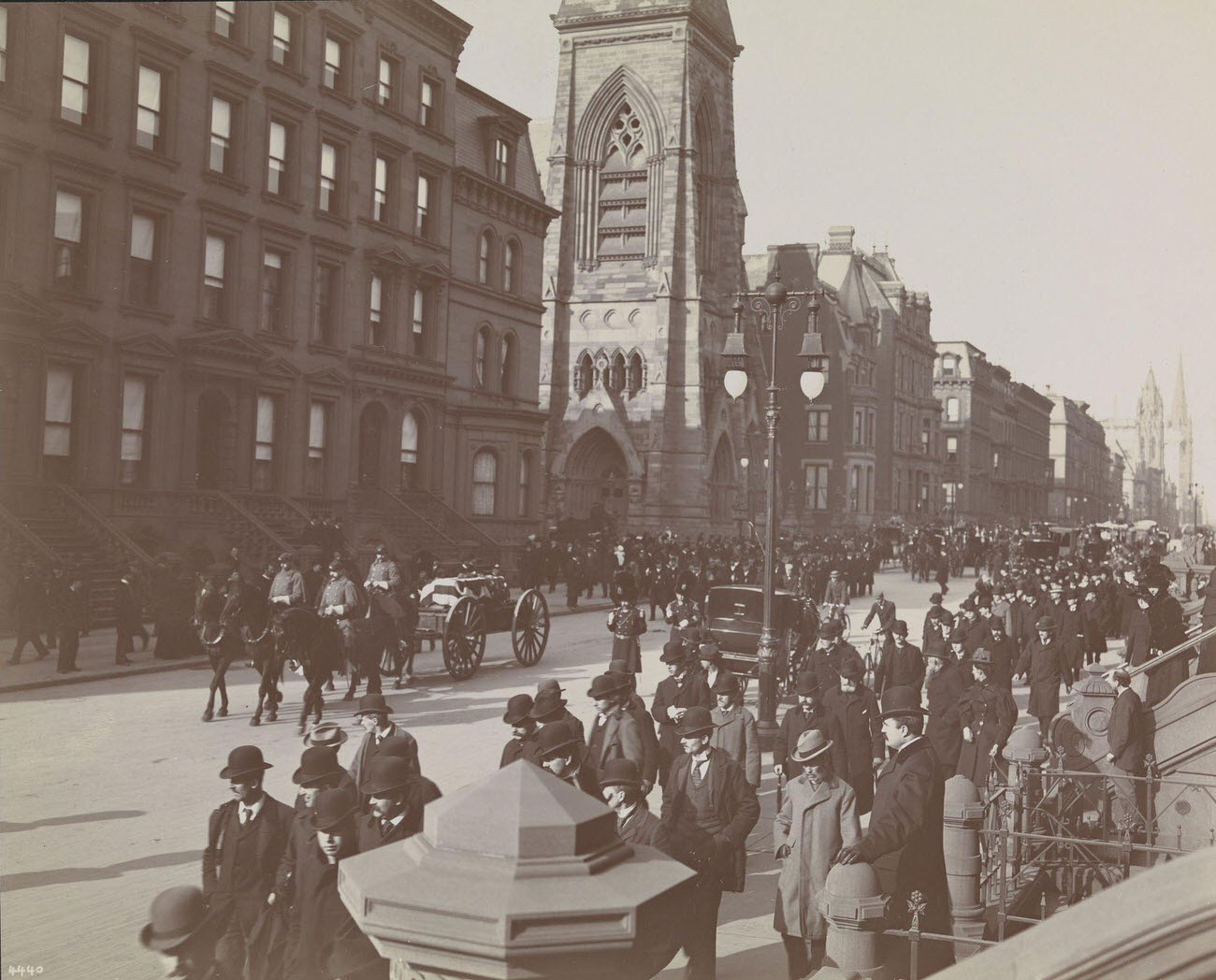

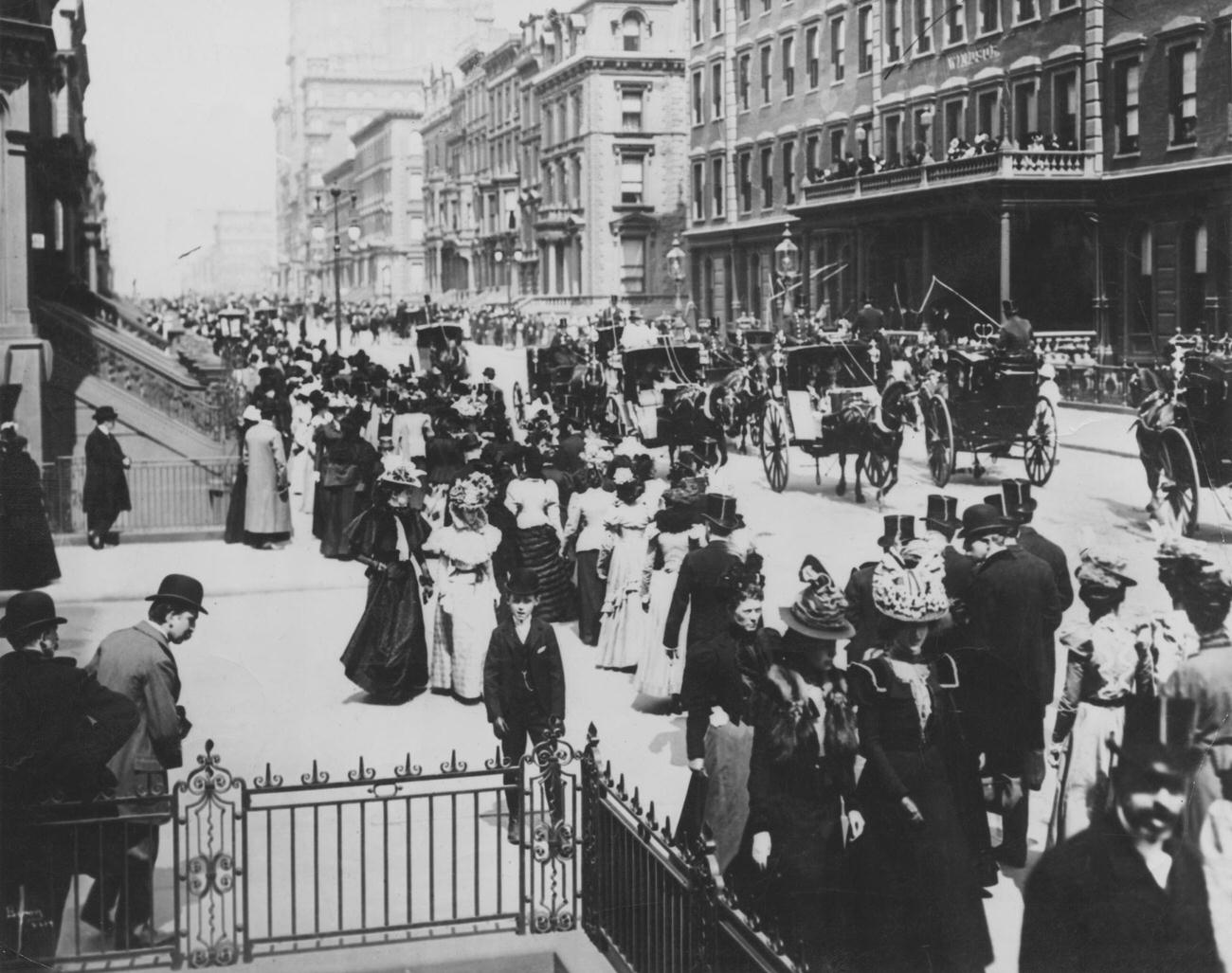
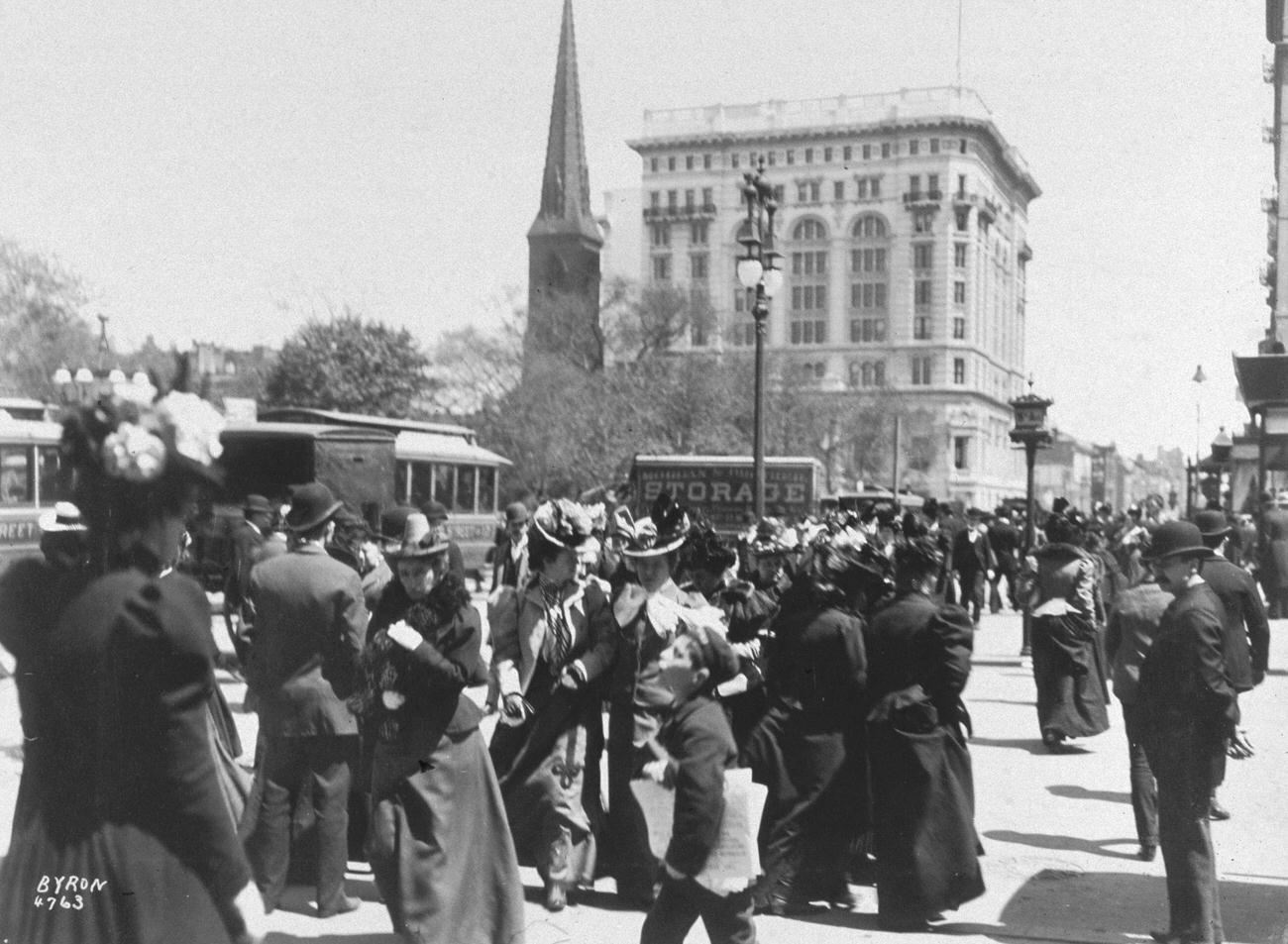
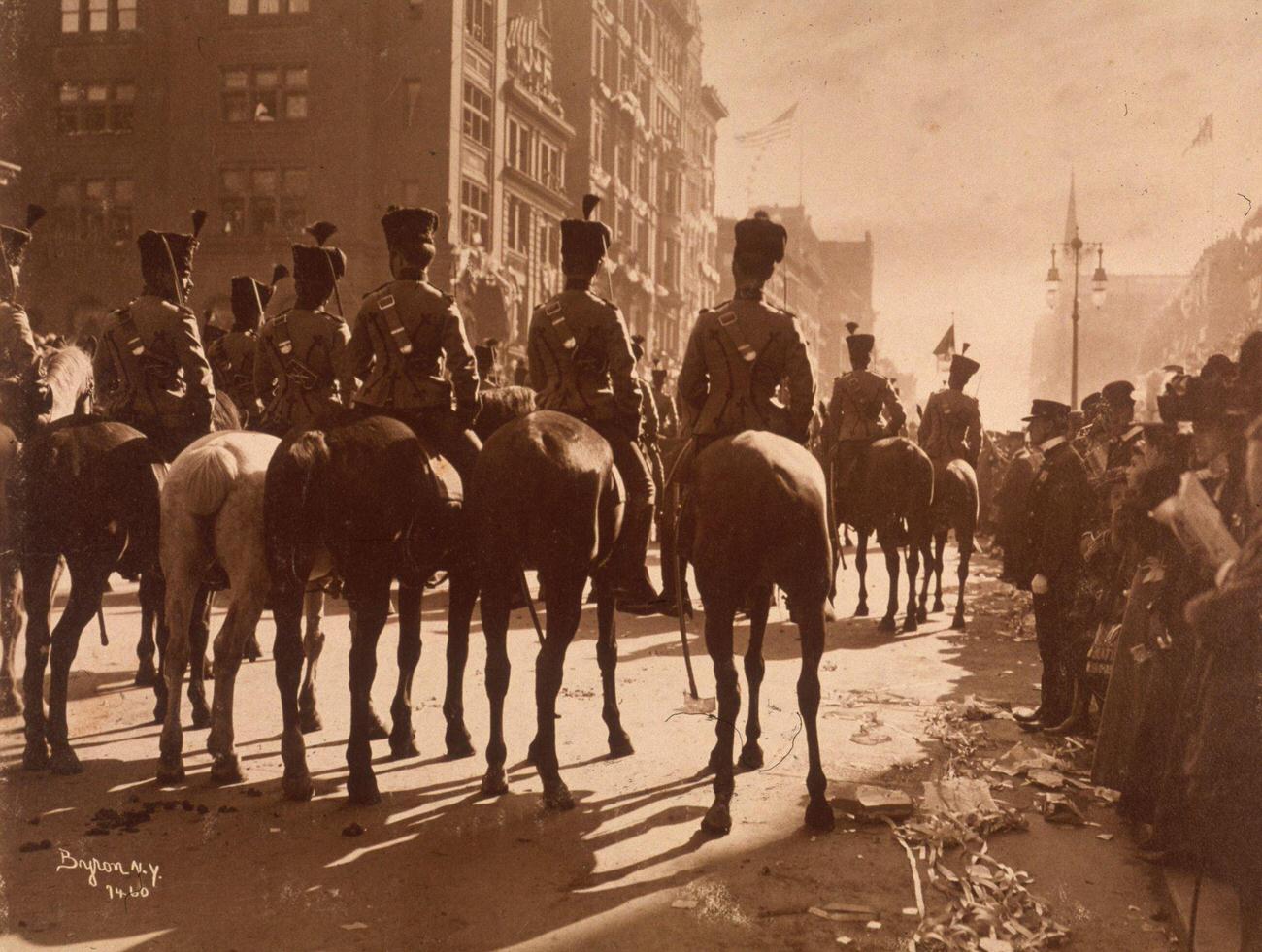
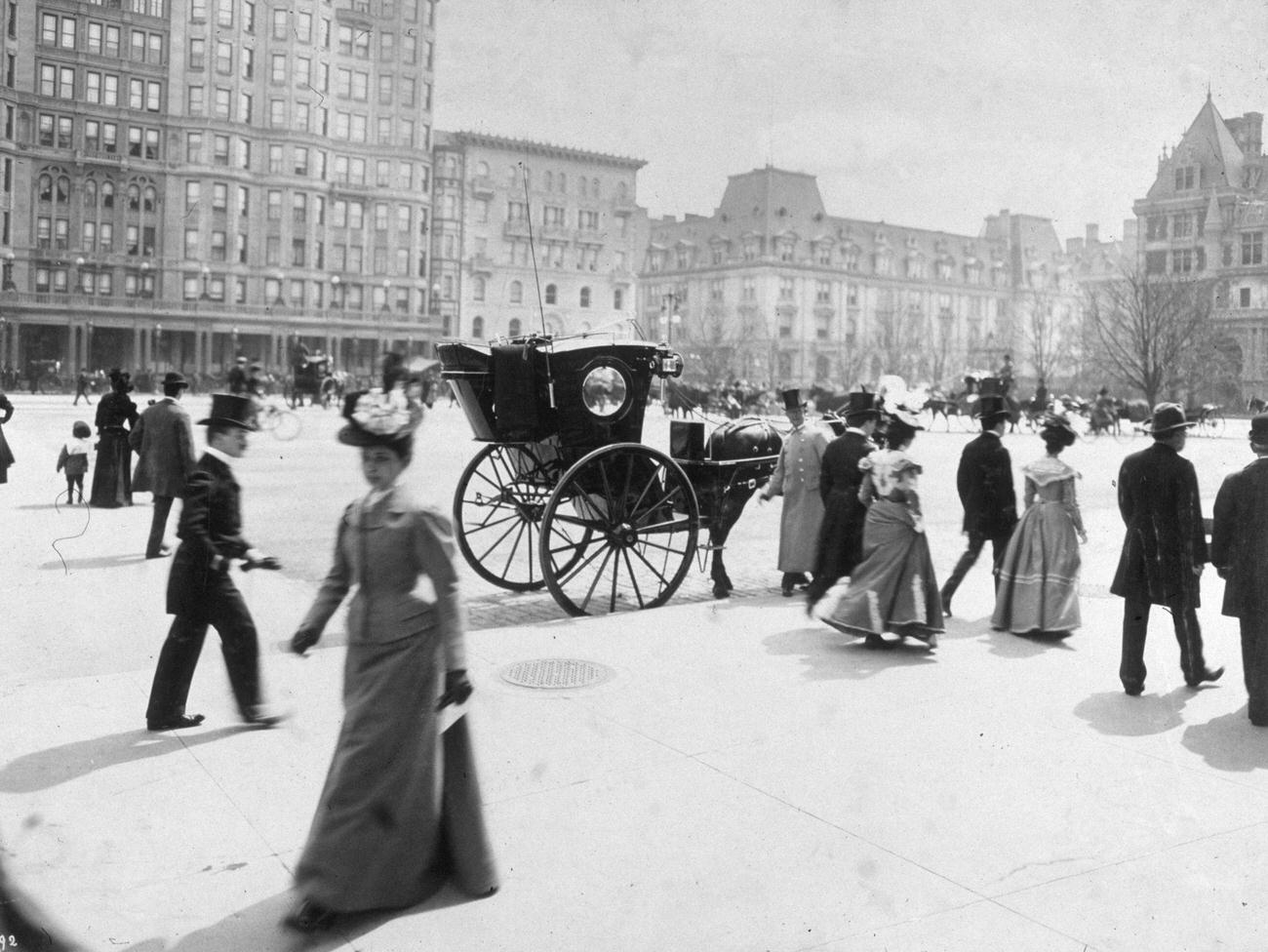
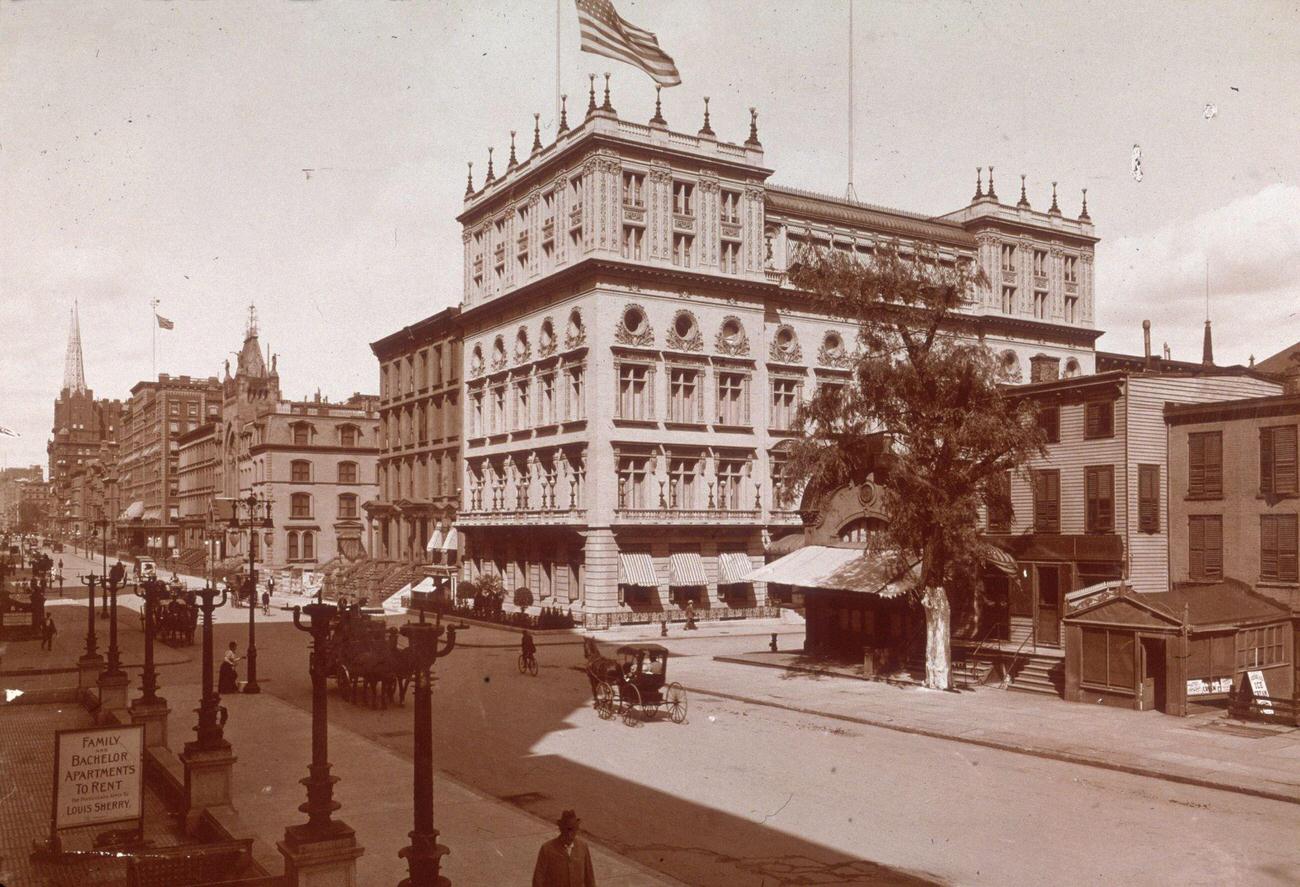
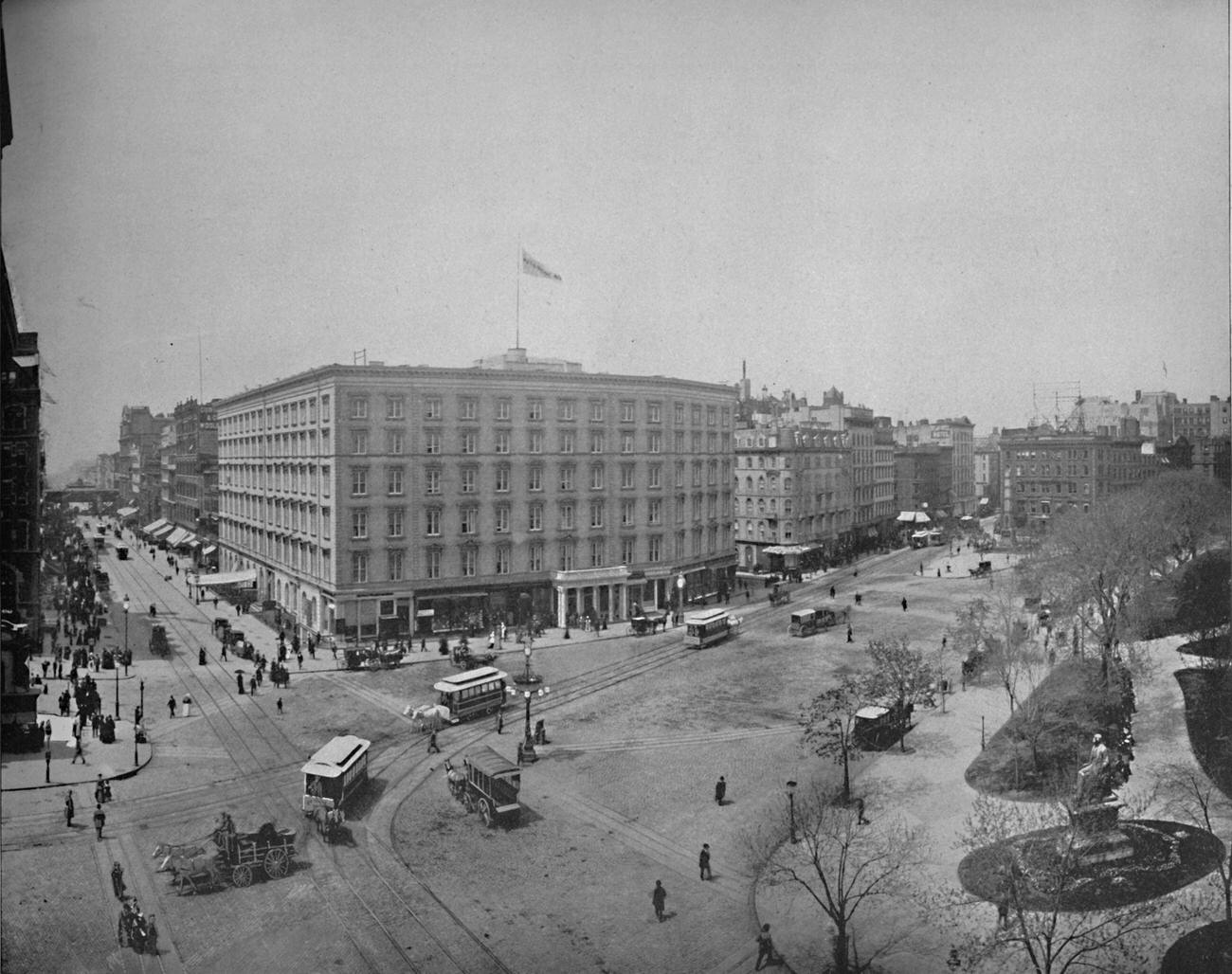
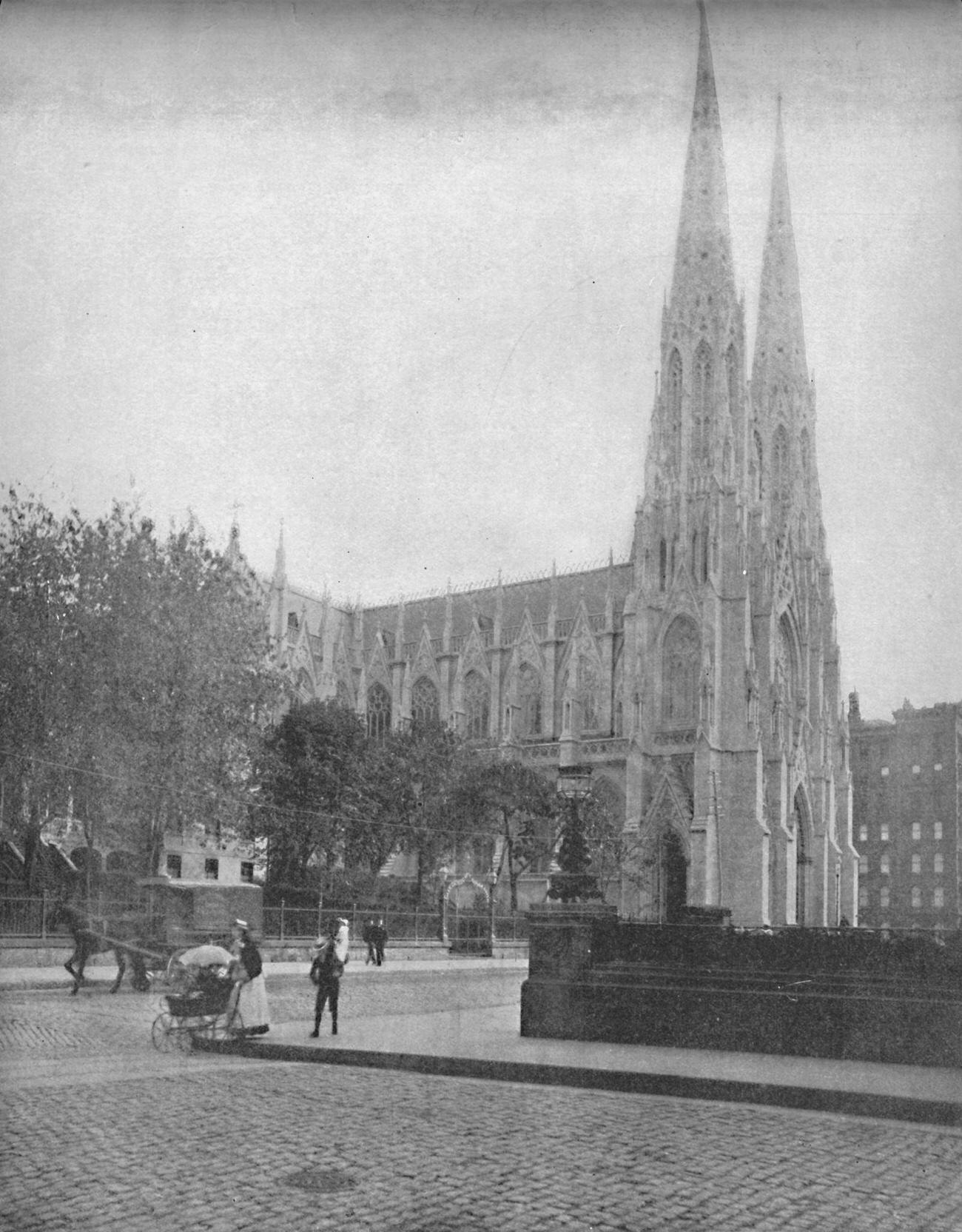
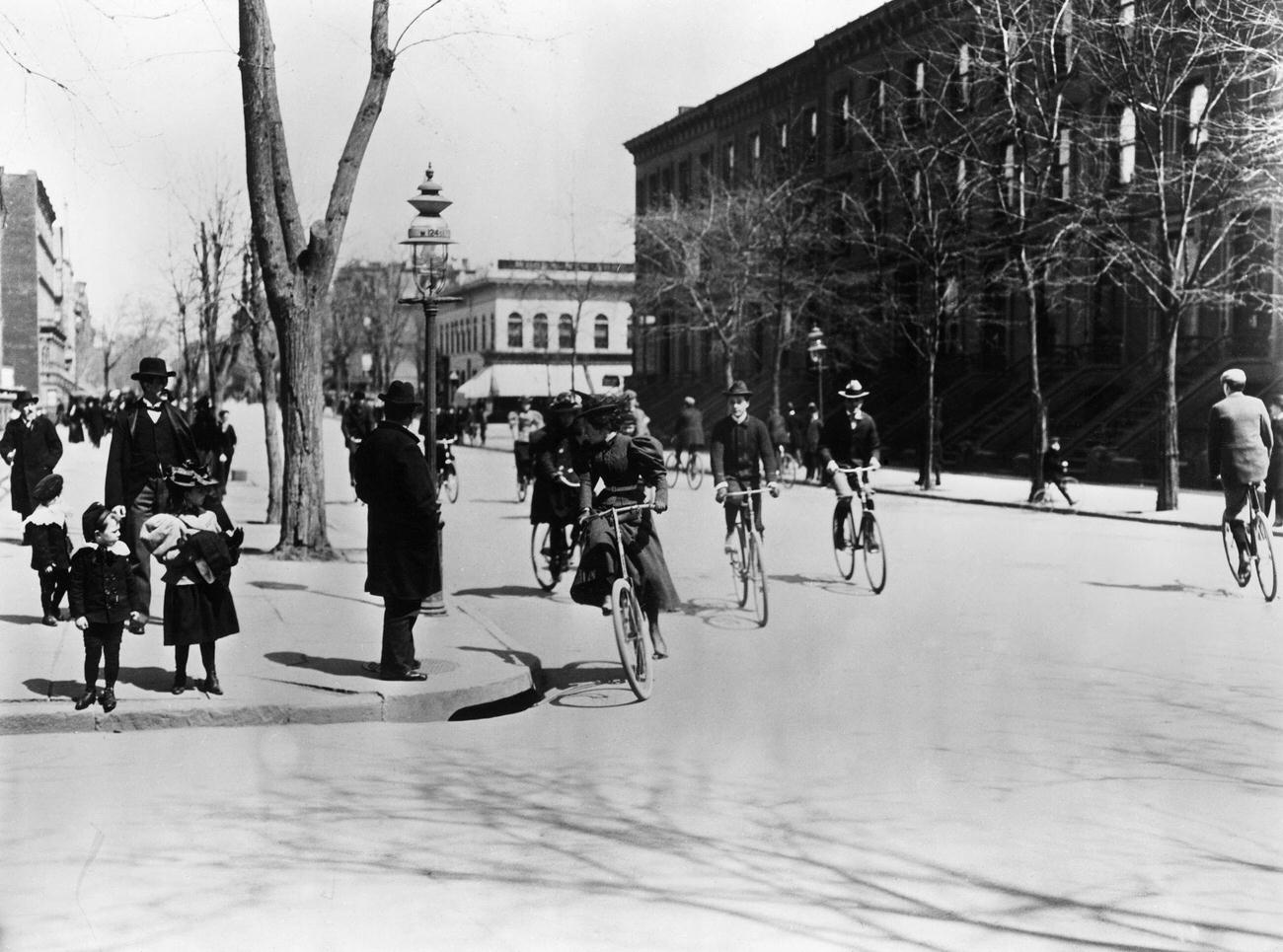
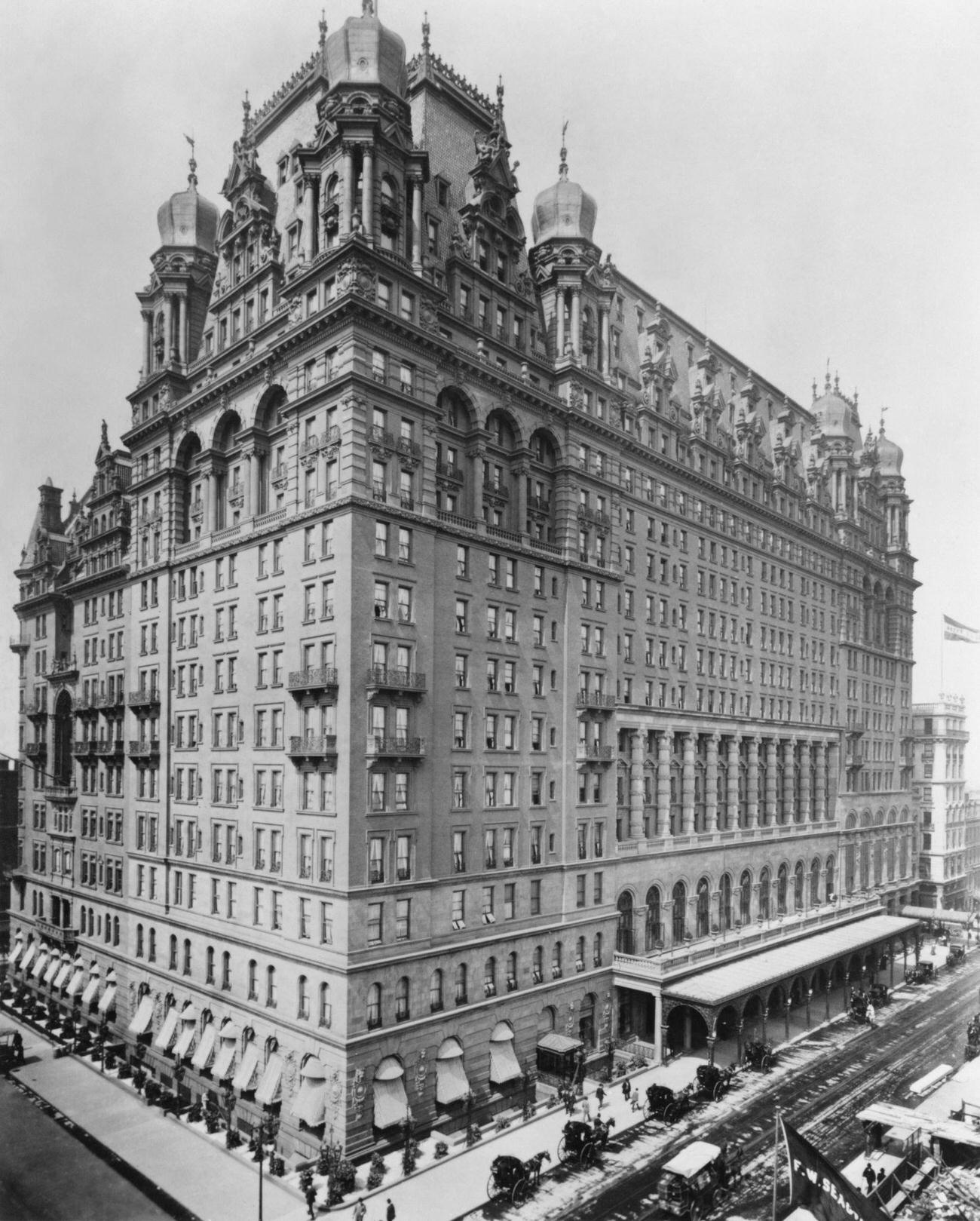
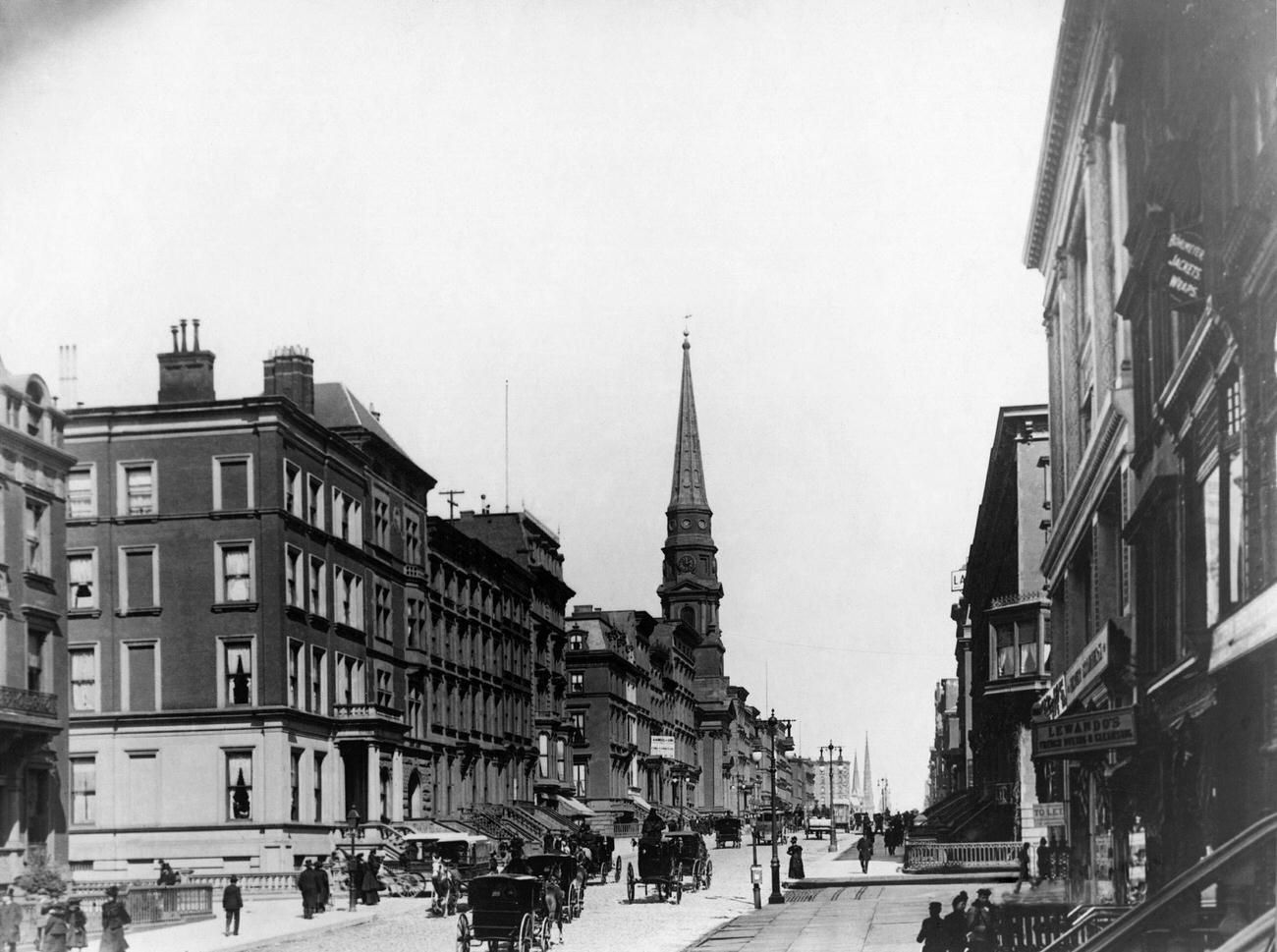
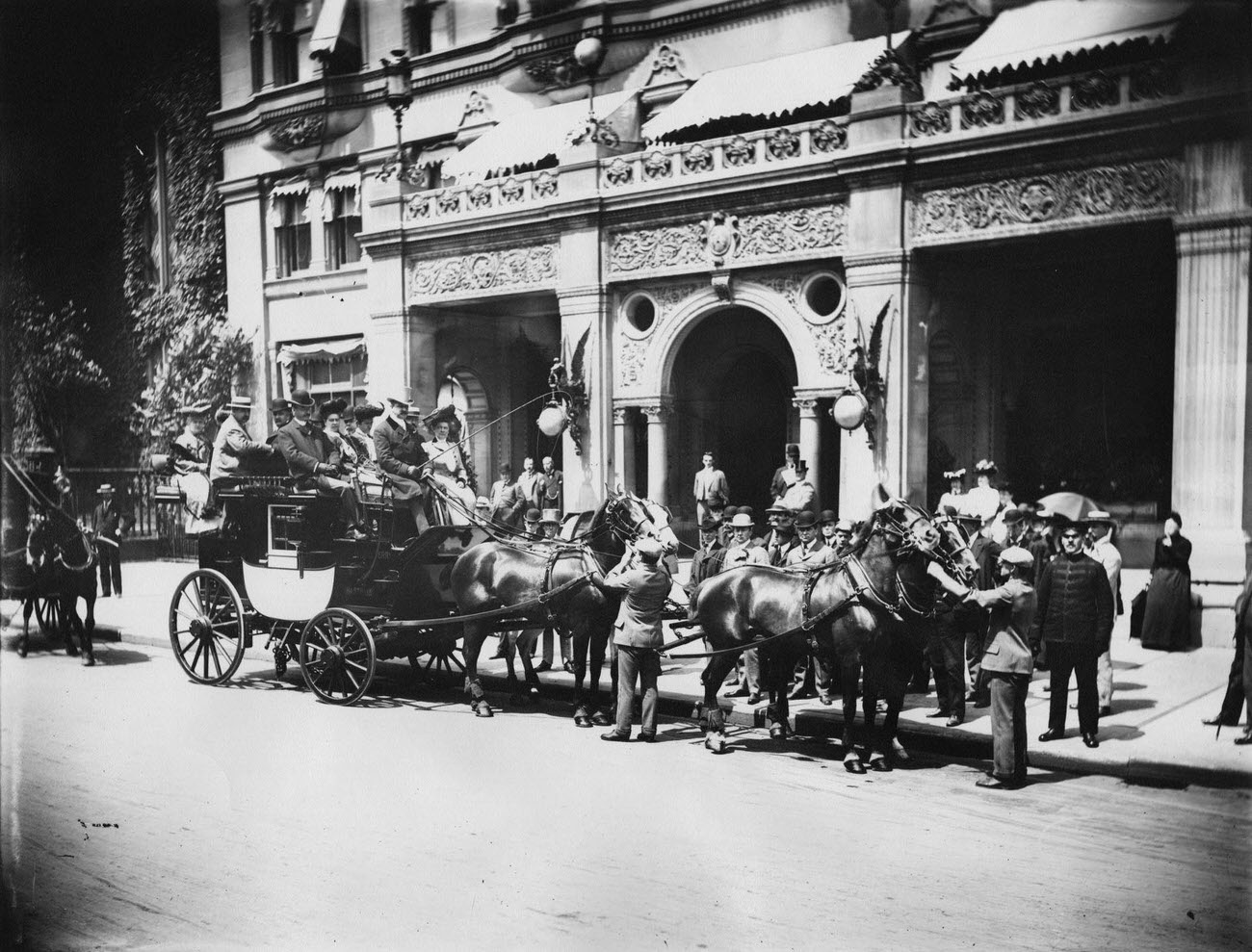
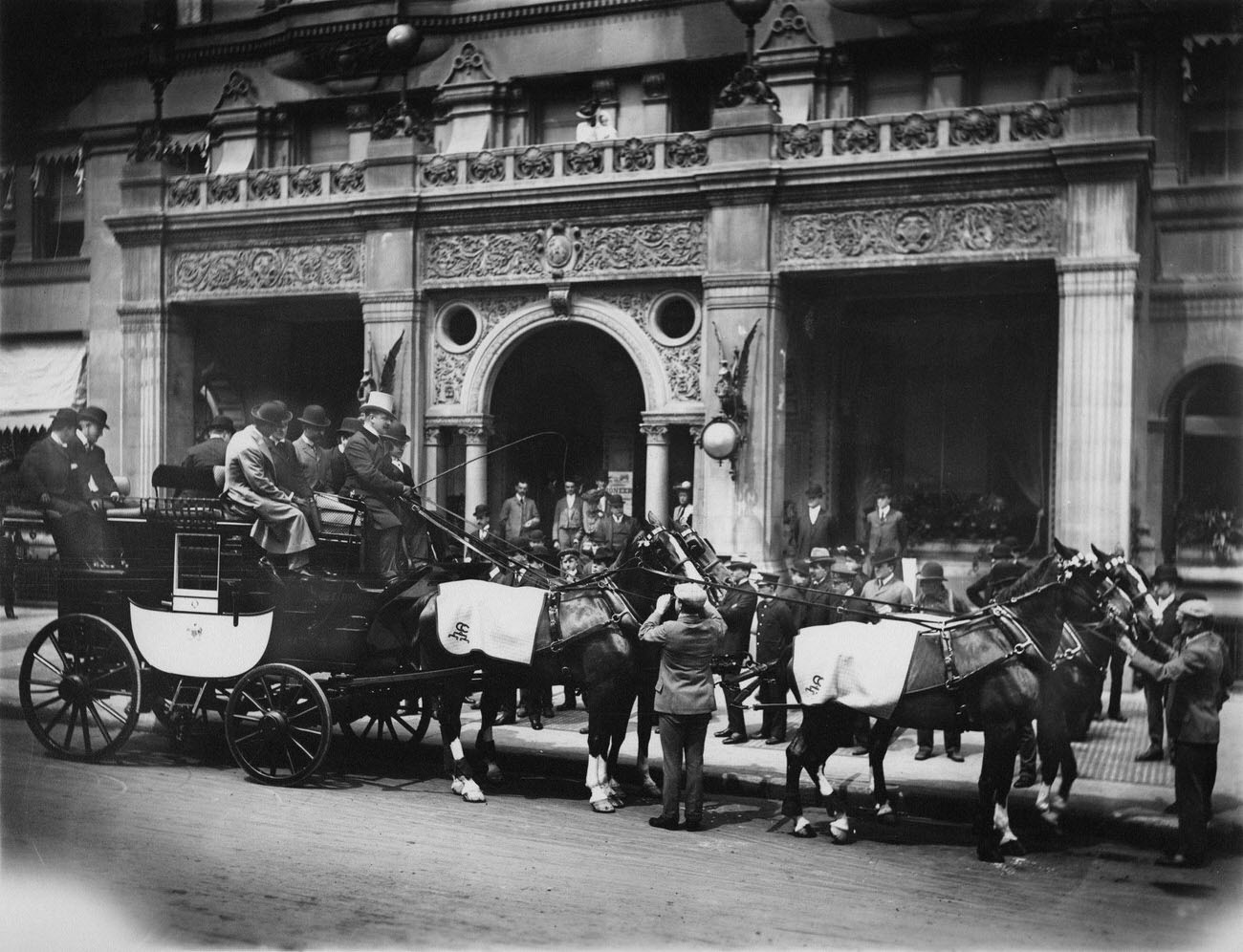
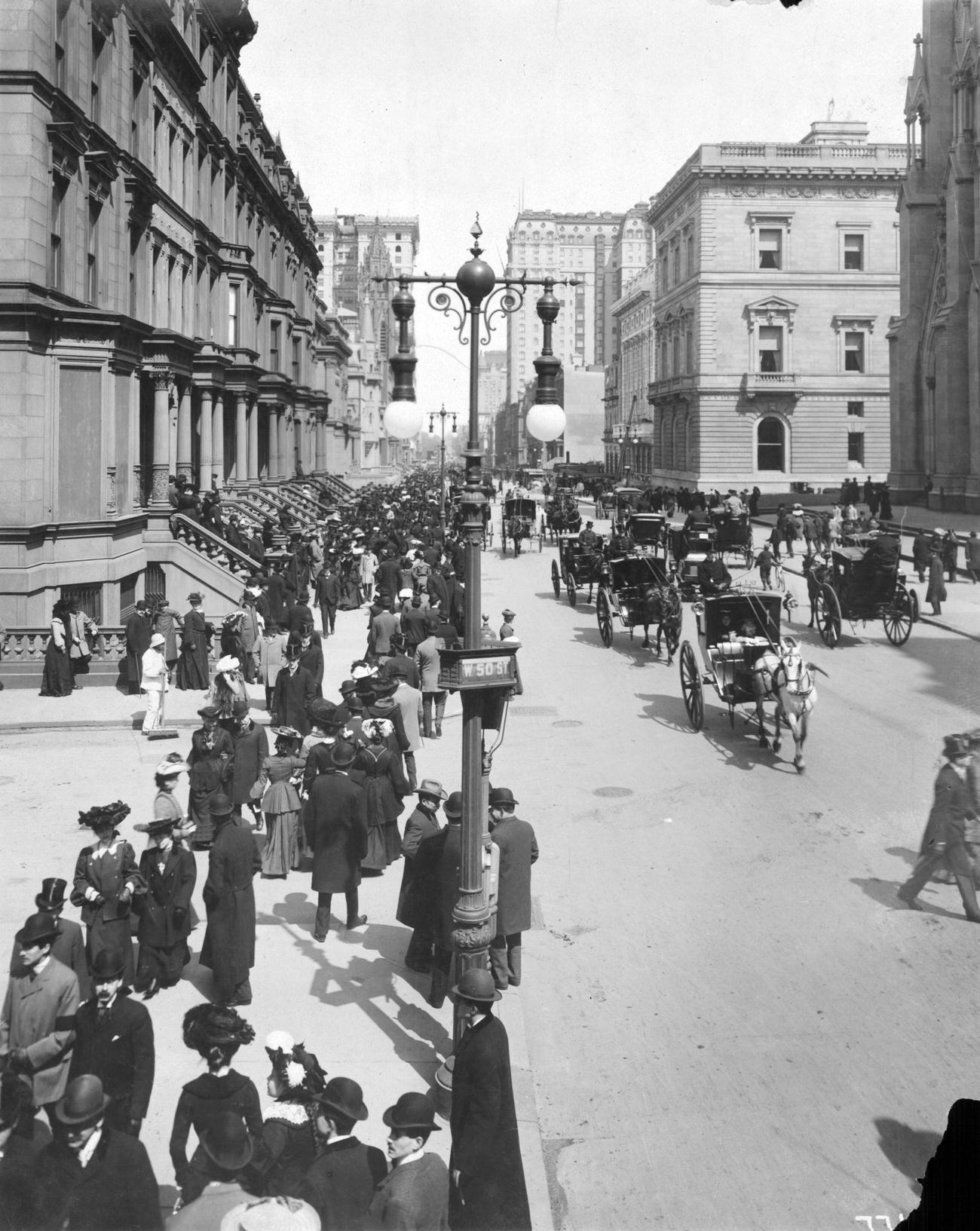
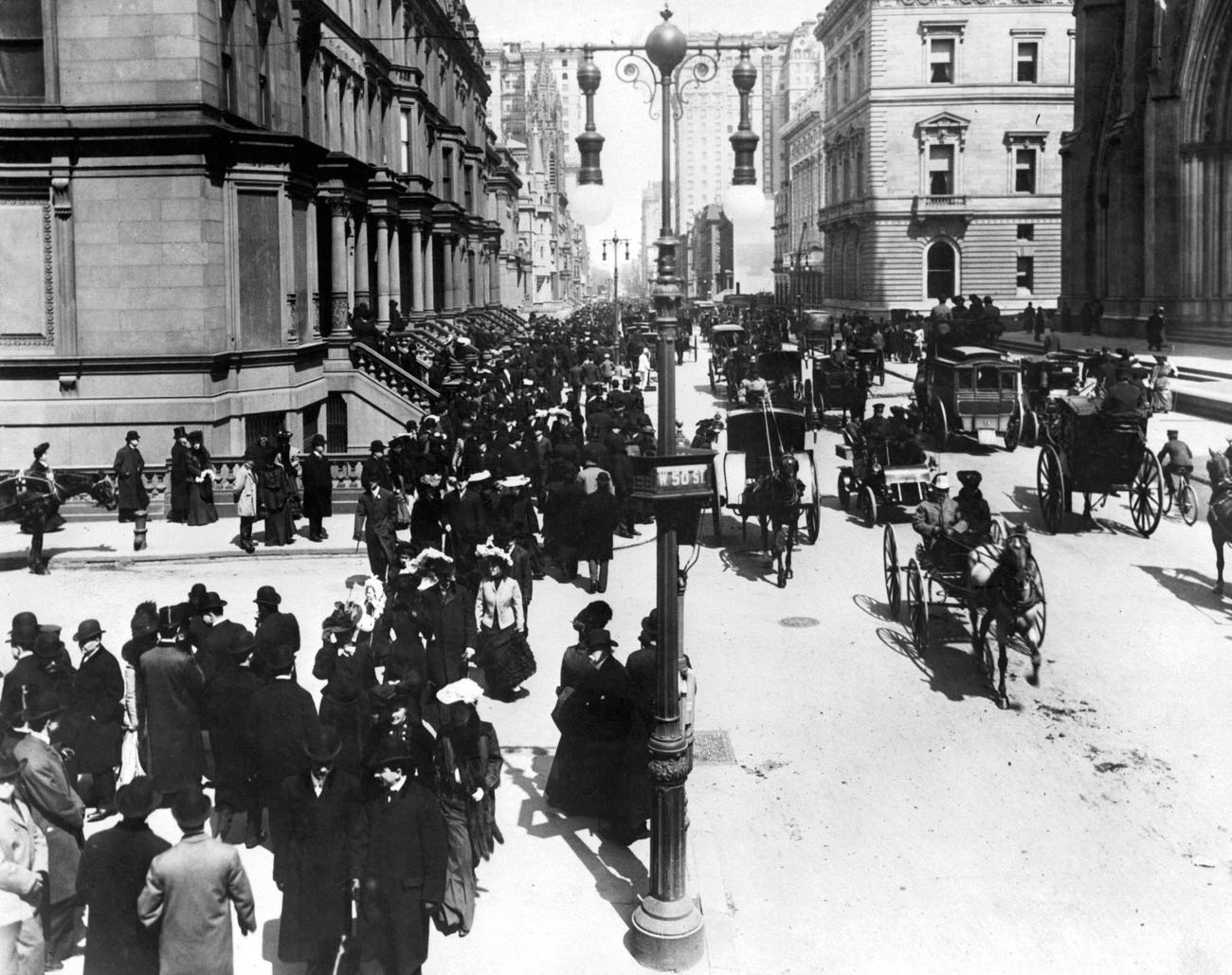
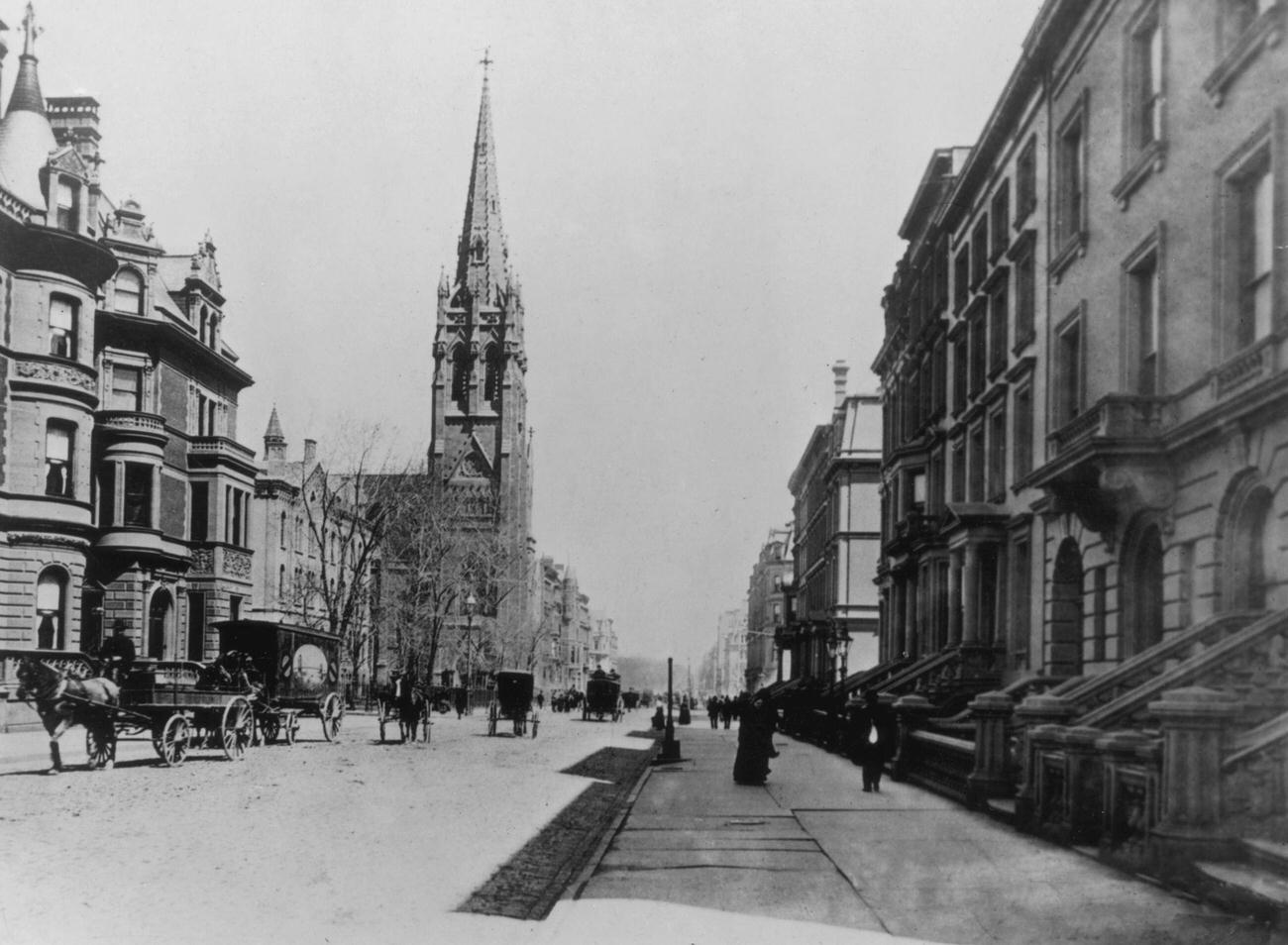
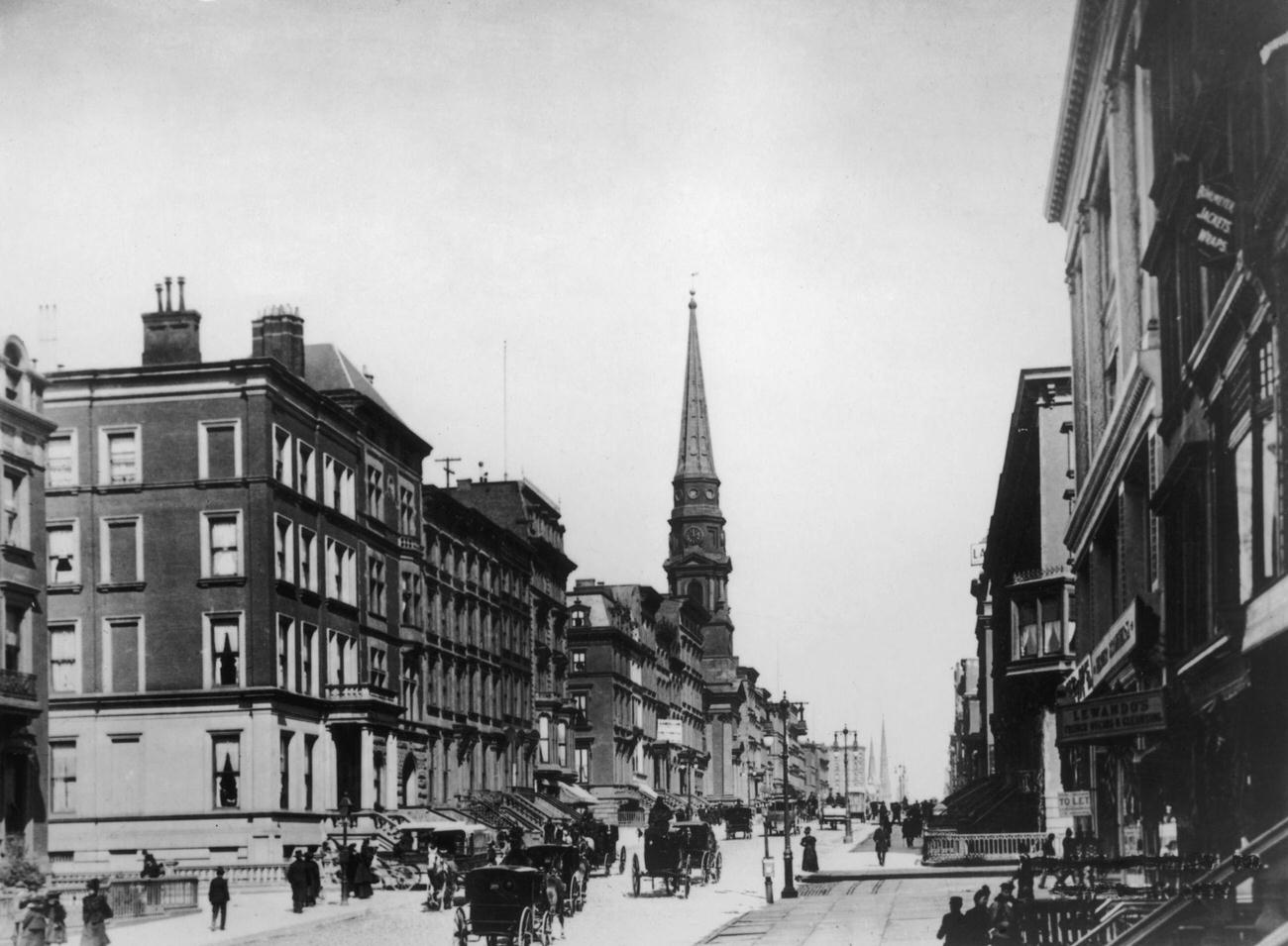
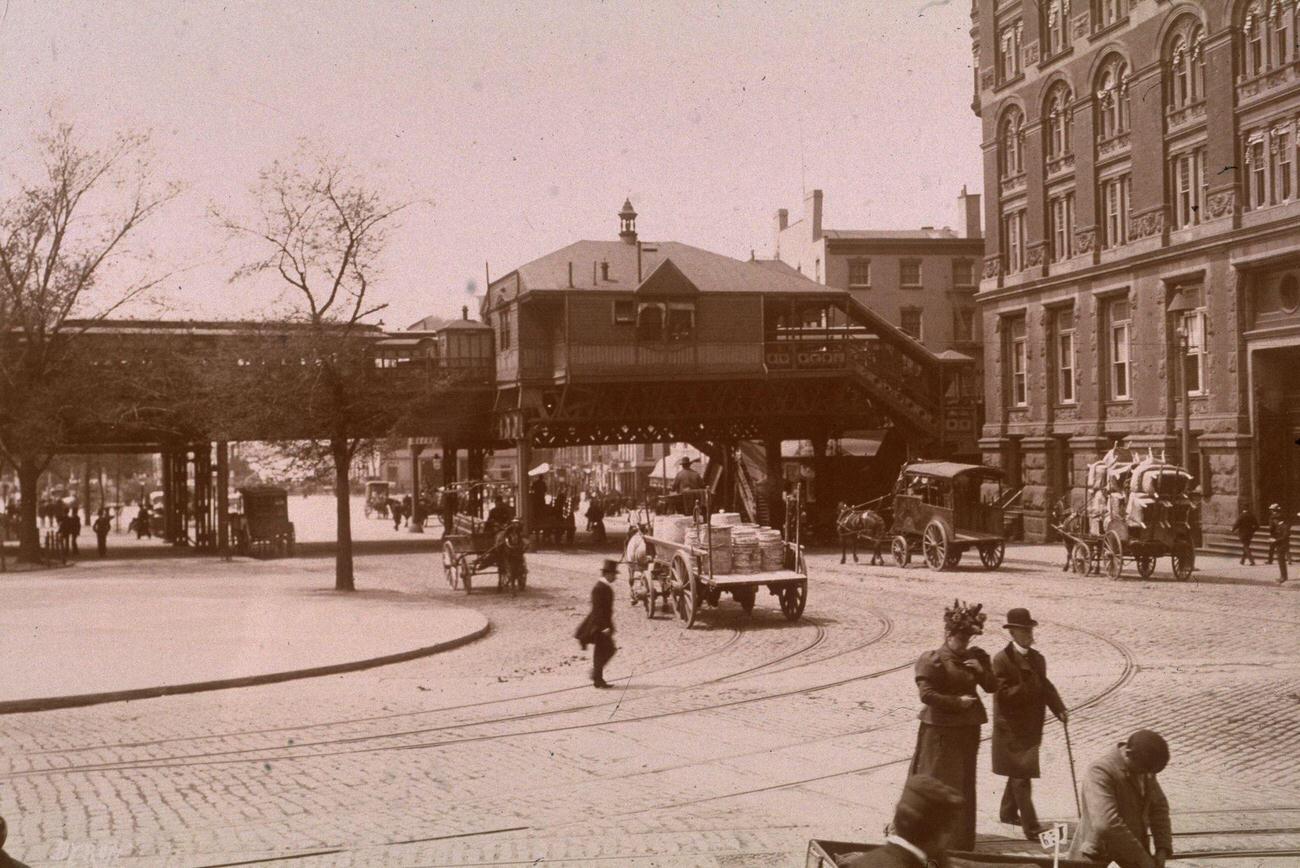
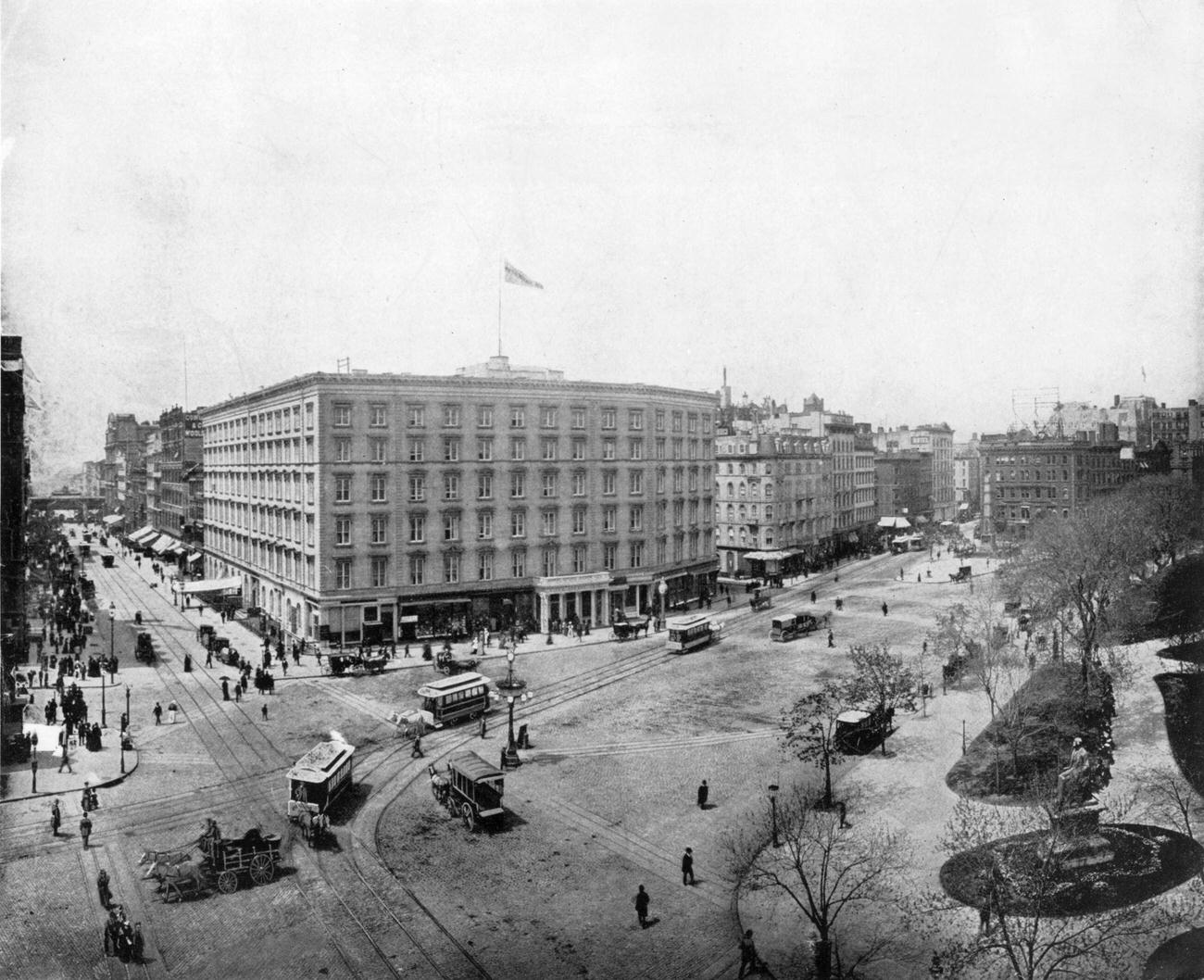
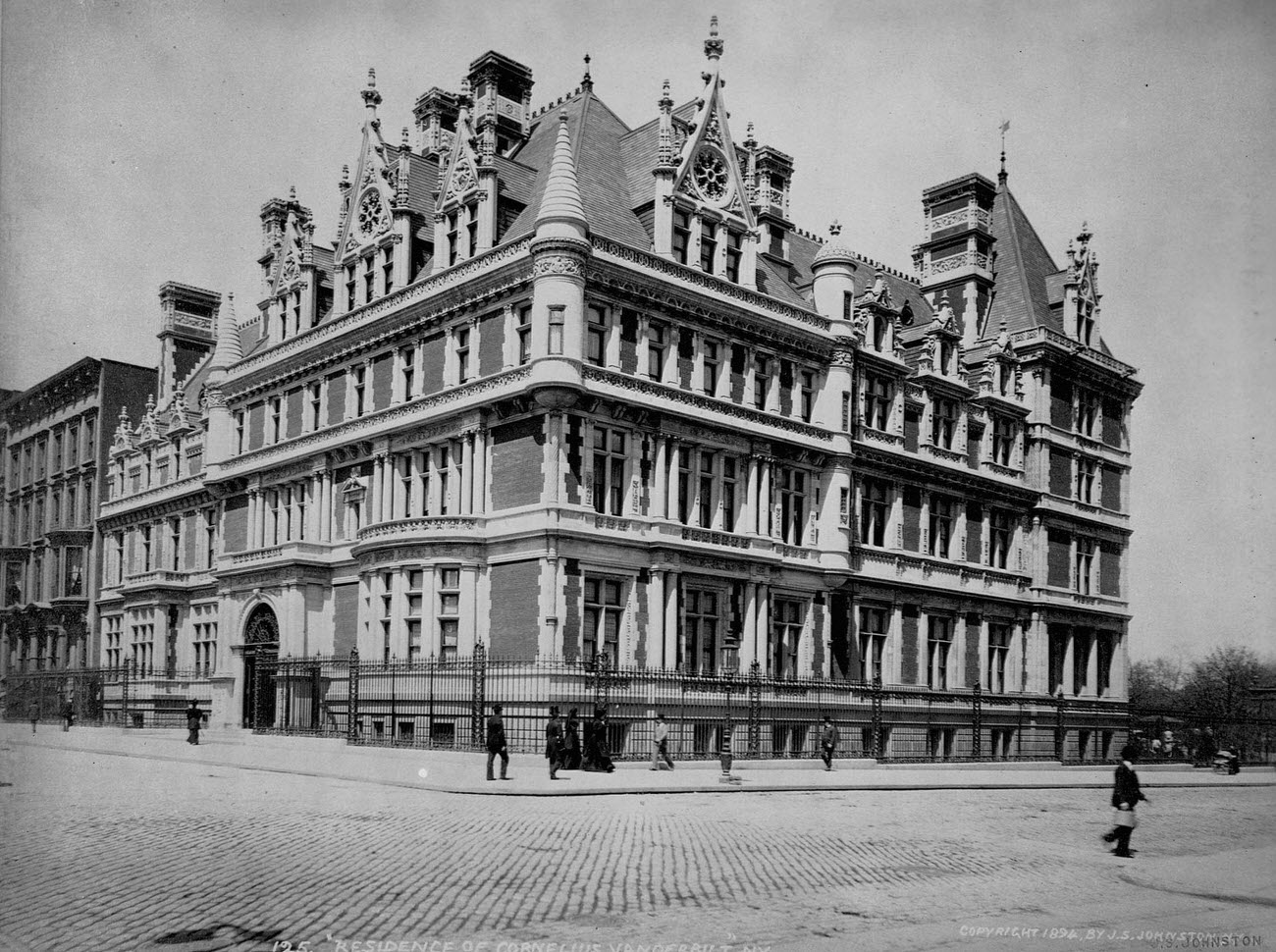
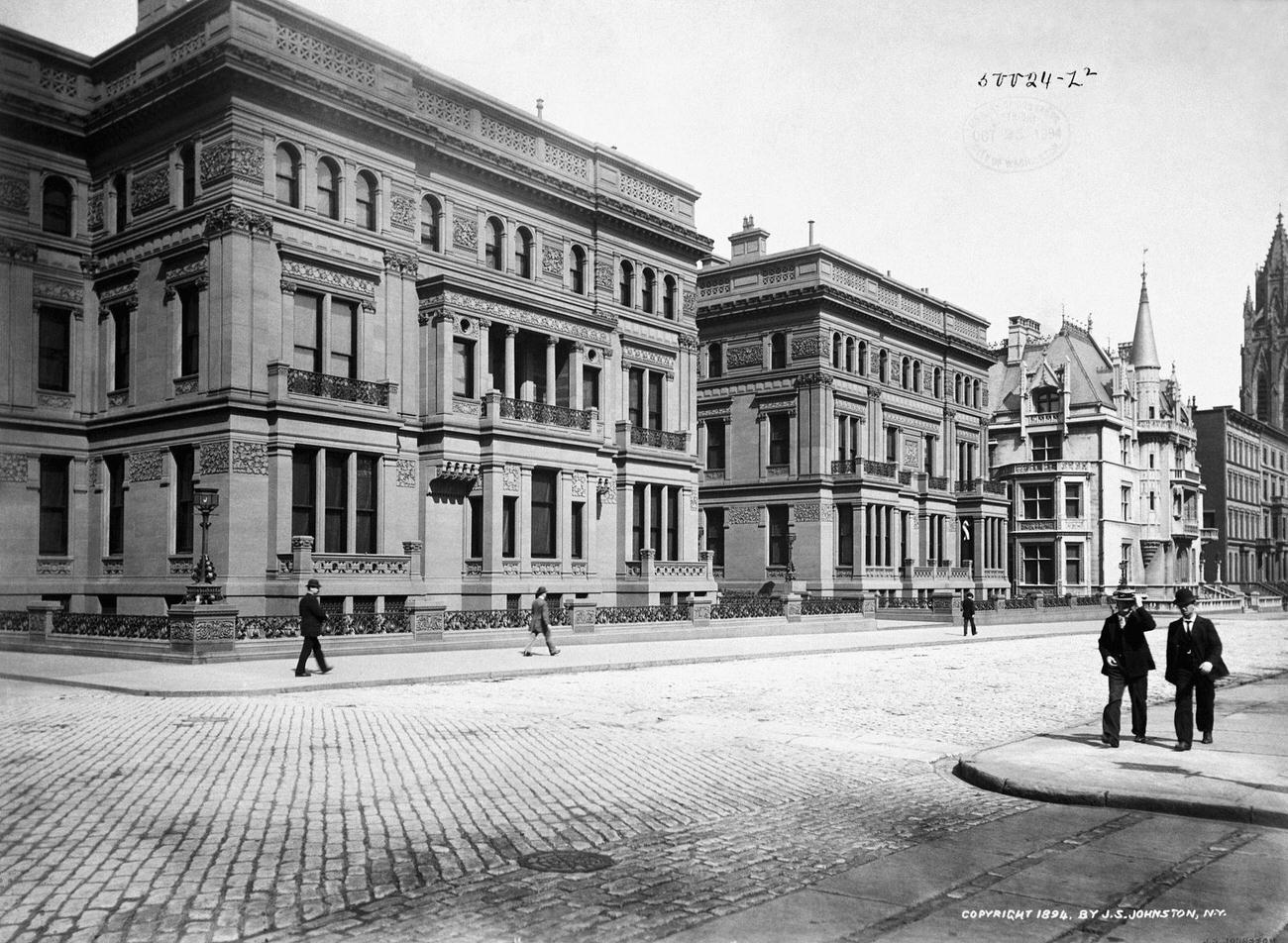
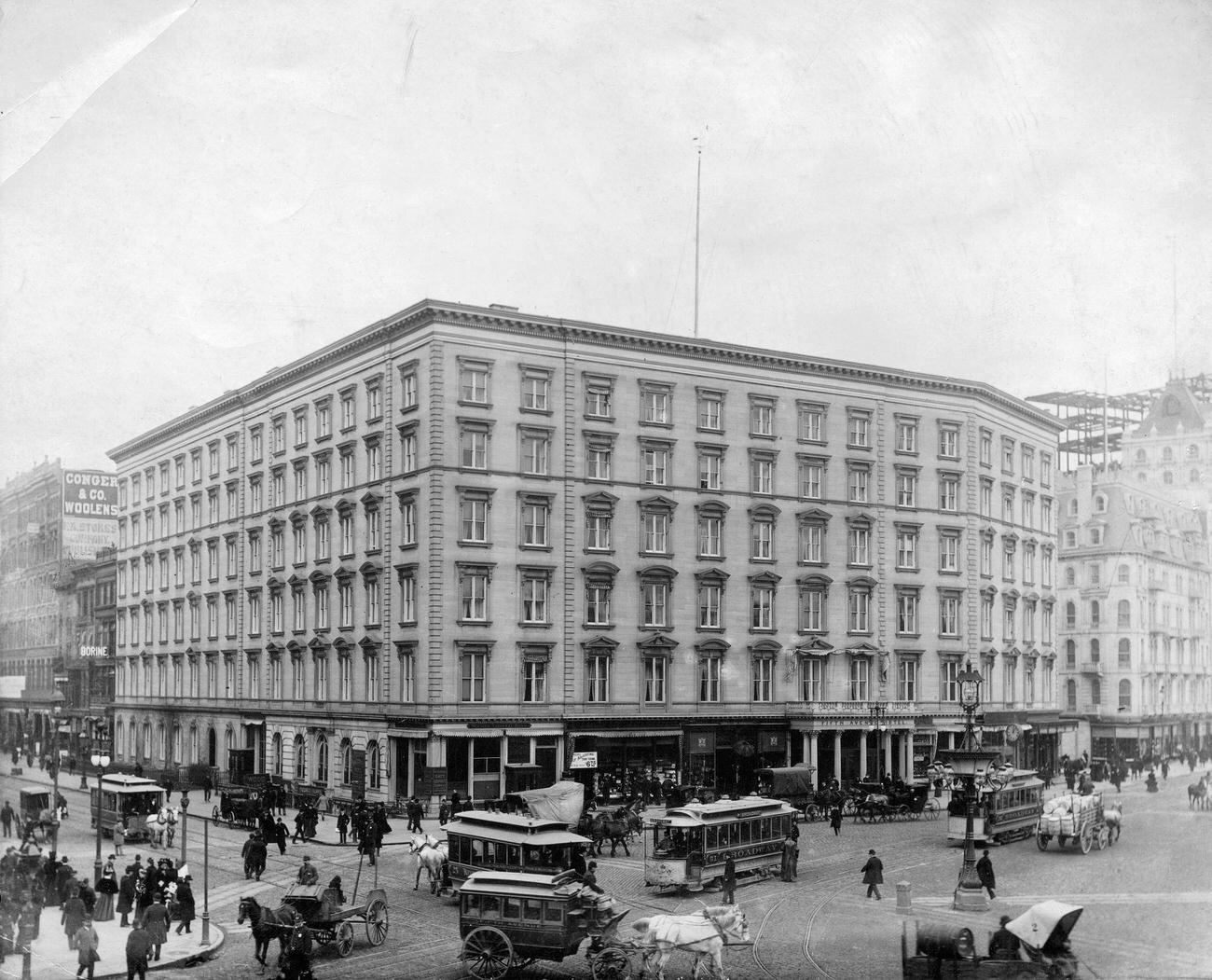

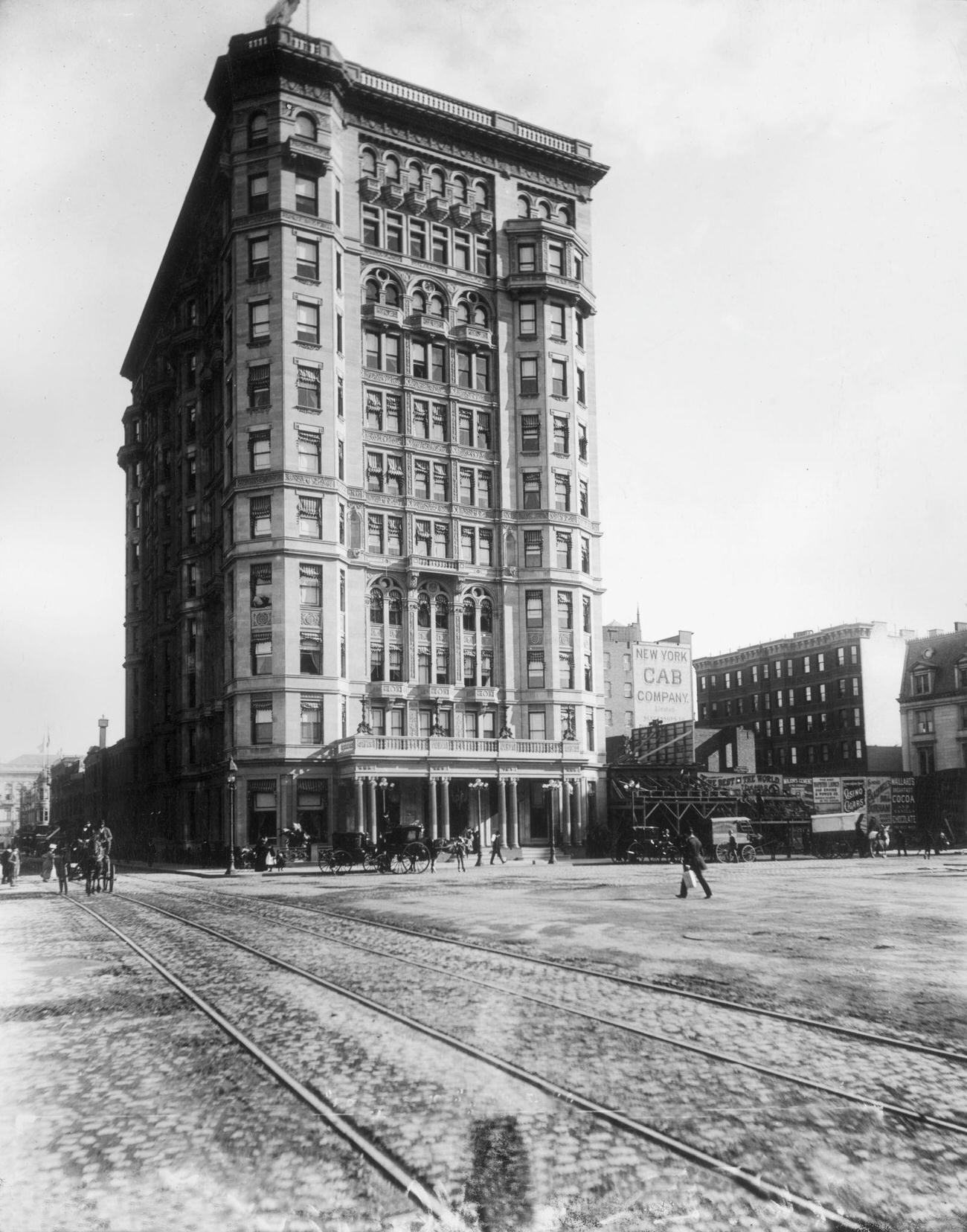
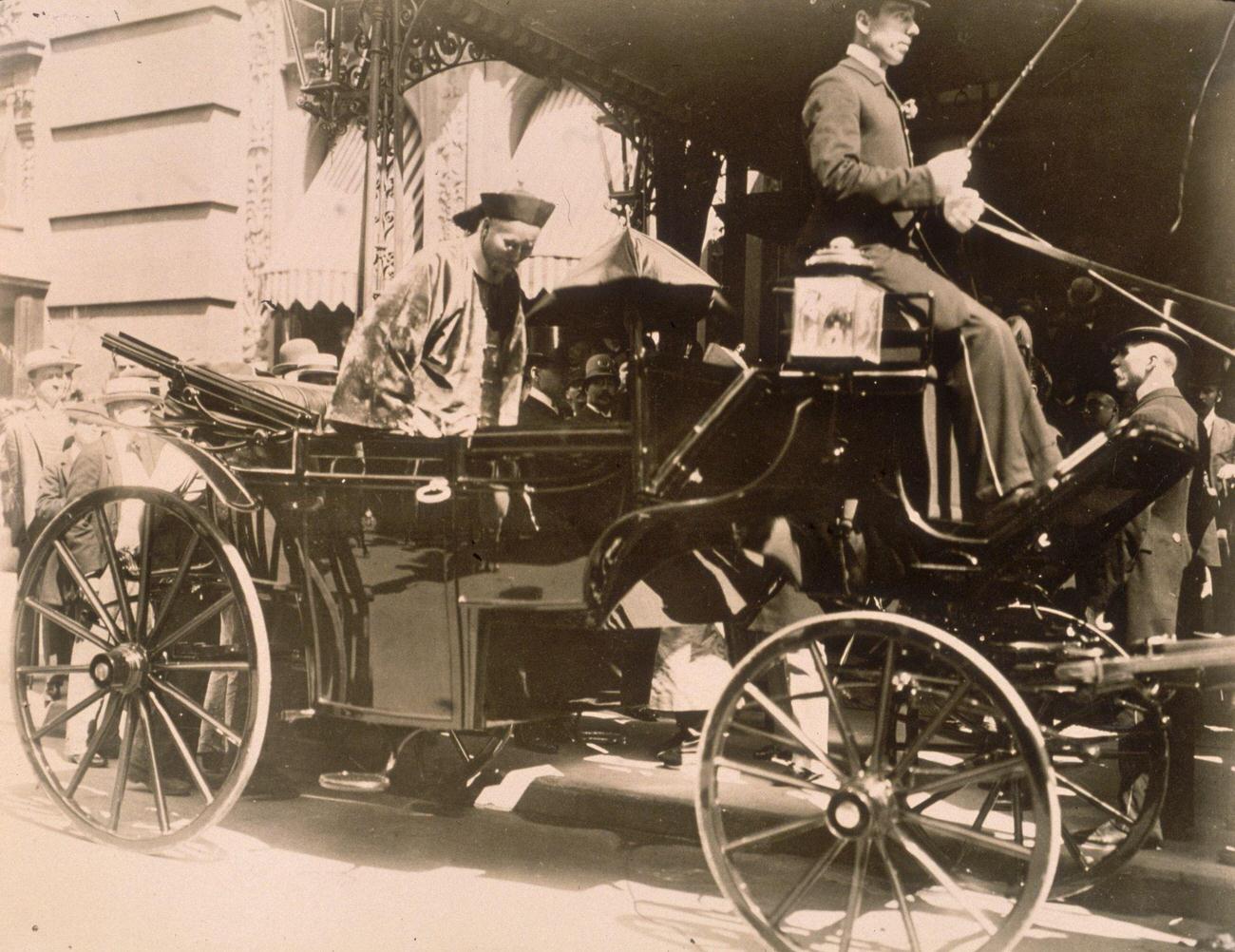
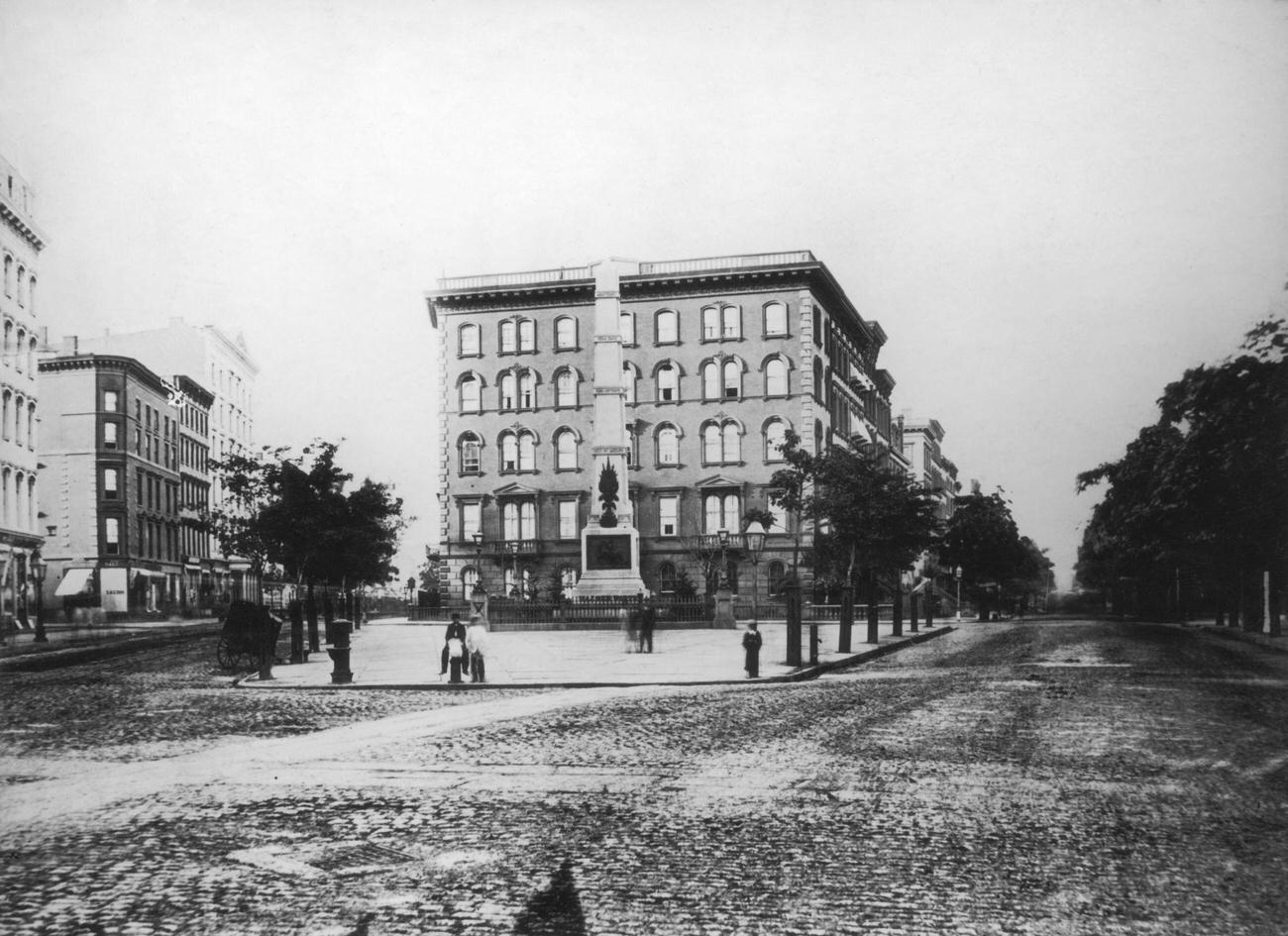

GIPHY App Key not set. Please check settings